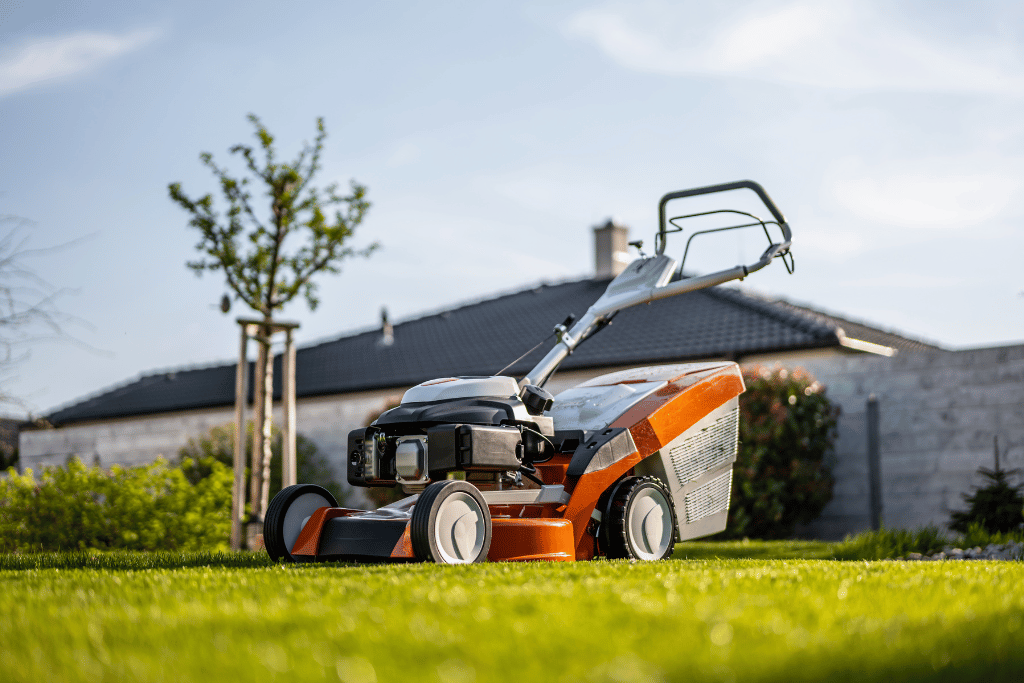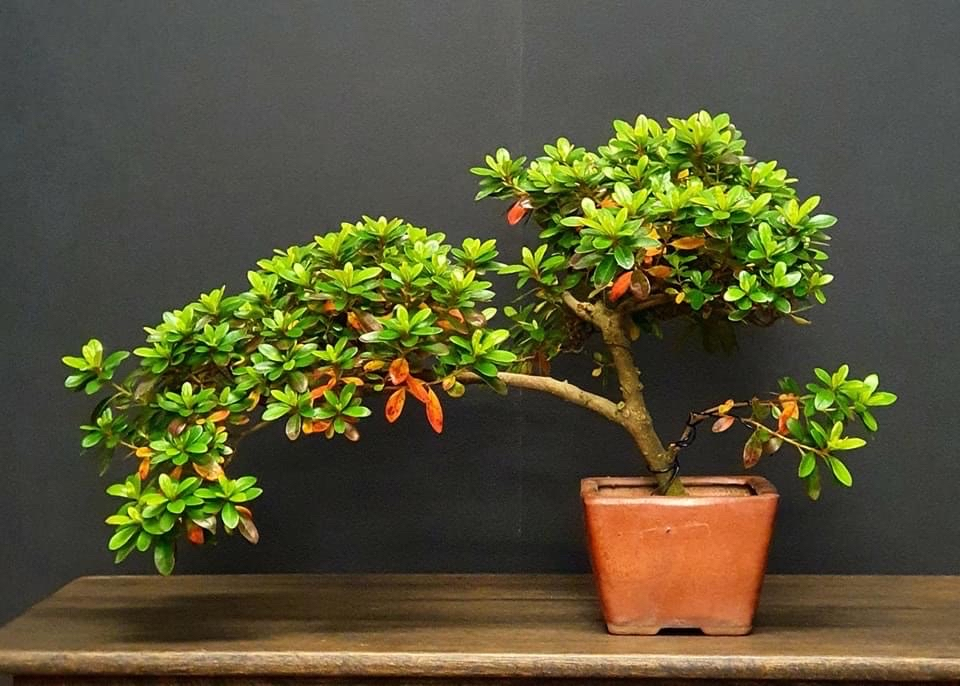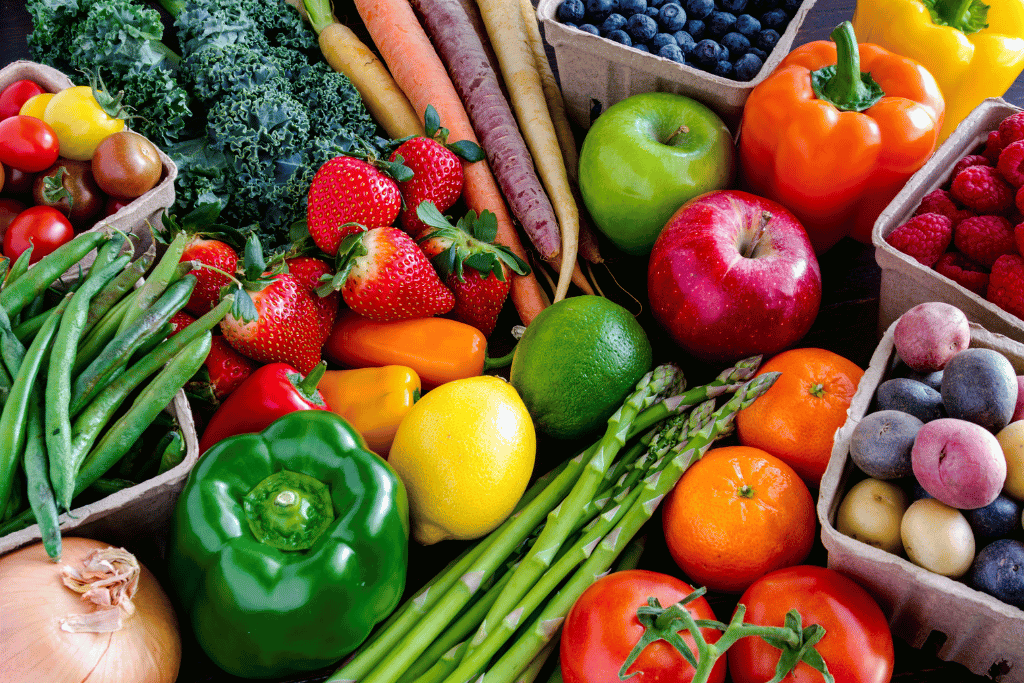
As the days shorten and the chill of winter’s breath whispers through the garden, both experienced horticulturists and budding garden enthusiasts may hesitate, thinking that the gardening season has come to an end. But fear not, my fellow gardeners, for November is not the time to stow away your gardening tools and equipment. In fact, this month is brimming with opportunities for those who cherish the soil and the earth’s bounty.
While many believe that a garden’s splendor wanes with the falling leaves, November presents a unique chance to continue nurturing life even in the face of encroaching cold. Whether you have been tending to your garden for years or are just beginning to explore your green thumb, a trove of potential awaits discovery.
I’ll share a variety of vegetables, fruits, flowers and grasses that you can sow and grow in November; let’s explore the possibilities of what to plant in November.
What vegetables to plant in November
The vegetables you can plant in November depend on your local climate and growing zone. In many regions, November marks the beginning of the cool-season planting, and you can grow a variety of vegetables that thrive in cooler temperatures. If you’re interested in growing vegetables, I’ve put together a list of cool-season planting options for you:
Kale
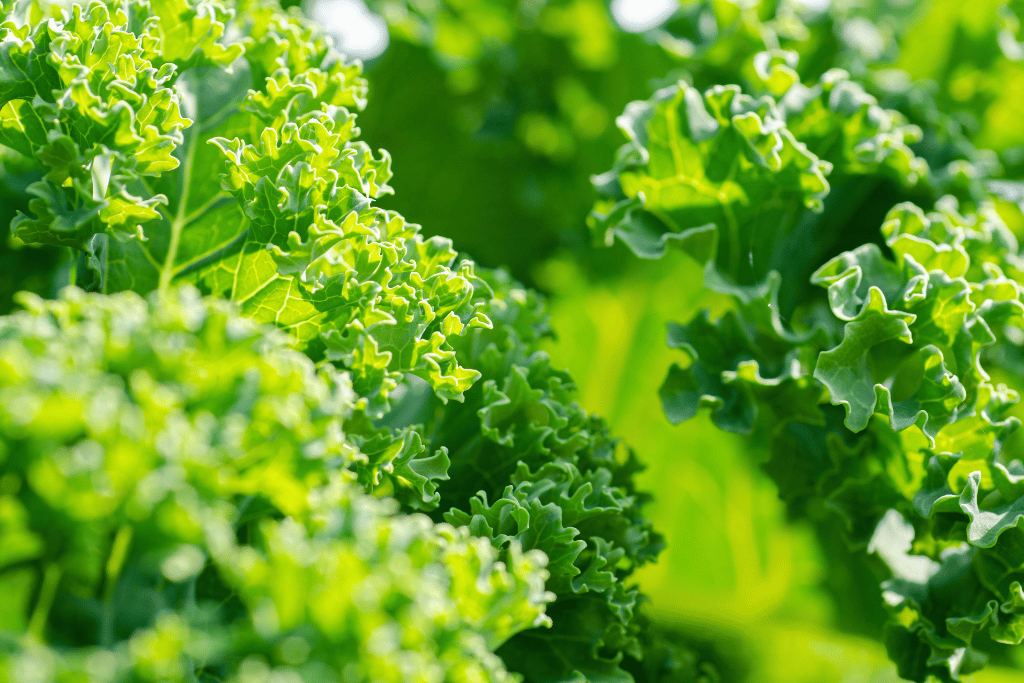
Kale is an excellent choice to add to your November garden. This cold-hardy leafy green not only survives but thrives in cooler temperatures and can even withstand light frost. To plant kale, follow these steps:
First, choose a well-drained spot in your garden with full to partial sunlight. Then, prepare the soil by amending it with compost or well-rotted organic matter to improve its fertility and structure. Next, plant kale seeds or seedlings about 18 inches apart in rows, ensuring they have enough space to grow.
Remember to water the kale plants consistently, keeping the soil evenly moist but not waterlogged. You can also mulch around the plants to retain moisture and suppress weeds. As the kale grows, you can start harvesting the outer leaves for fresh, nutritious additions to your meals.
Lettuce

Lettuce is another versatile and popular choice for a November garden. It’s a cool-season crop, and you can enjoy a steady supply of fresh salads by following these steps:
Select a location with well-drained, loamy soil that receives partial sunlight. You can directly sow lettuce seeds in rows or plant lettuce transplants. Ensure the soil remains consistently moist by watering regularly, especially during dry spells.
Consider providing some shade during the hottest parts of the day to prevent lettuce from bolting (going to seed) prematurely. Harvest lettuce leaves as needed for salads and sandwiches, and the plant will continue to produce new growth.
Spinach

Spinach is a fantastic option for colder seasons and can be sown in the month of November. To cultivate robust spinach, adhere to these guidelines:
First, choose a location with well-drained, moist soil and partial sunlight. Sow spinach seeds in rows, spacing them about 6 inches apart. Keep the soil consistently moist, and consider using a light layer of mulch to retain moisture and prevent weeds.
As the spinach grows, pick the outer leaves to encourage continued growth. Spinach is highly nutritious and a versatile addition to your meals.
Garlic
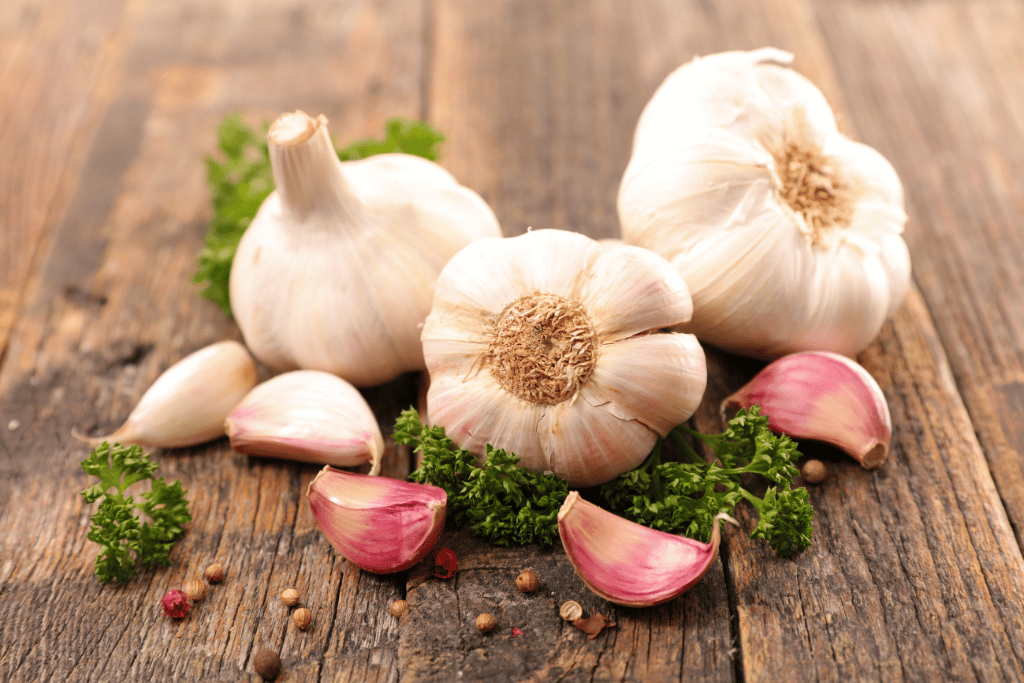
Garlic is typically planted in the fall, making November a suitable time for this flavorful crop. Here’s how to grow garlic:
Select a sunny spot with well-drained soil for planting garlic cloves. Break apart the garlic bulb into individual cloves and plant them with the pointed end facing up, about 4-6 inches apart.
Mulch the area with straw or leaves to protect the garlic from extreme cold and retain moisture. Water sparingly, as garlic prefers slightly drier conditions compared to many other vegetables. In the spring, you can look forward to harvesting mature garlic bulbs for cooking and seasoning.
Onions
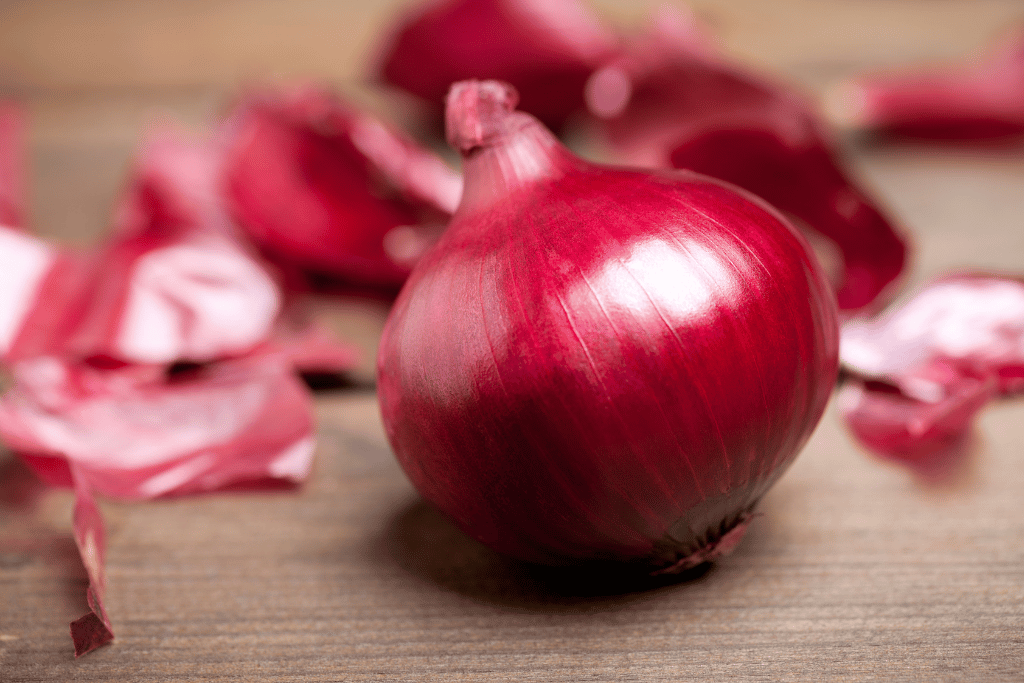
Onions are a versatile kitchen staple and can be planted in November for a future harvest. Here’s how to plant and care for onions:
Choose a sunny location with well-drained soil for your onion bed. Decide whether you want to grow onions from sets (small onion bulbs) or seeds. Sets are easier for beginners.
Plant the sets or sow onion seeds in rows, leaving about 4-6 inches of space between each plant. Keep the soil consistently moist but not waterlogged to encourage healthy onion bulb formation. Onions appreciate regular weeding and mulching to maintain a clean, weed-free bed.
Mizuna
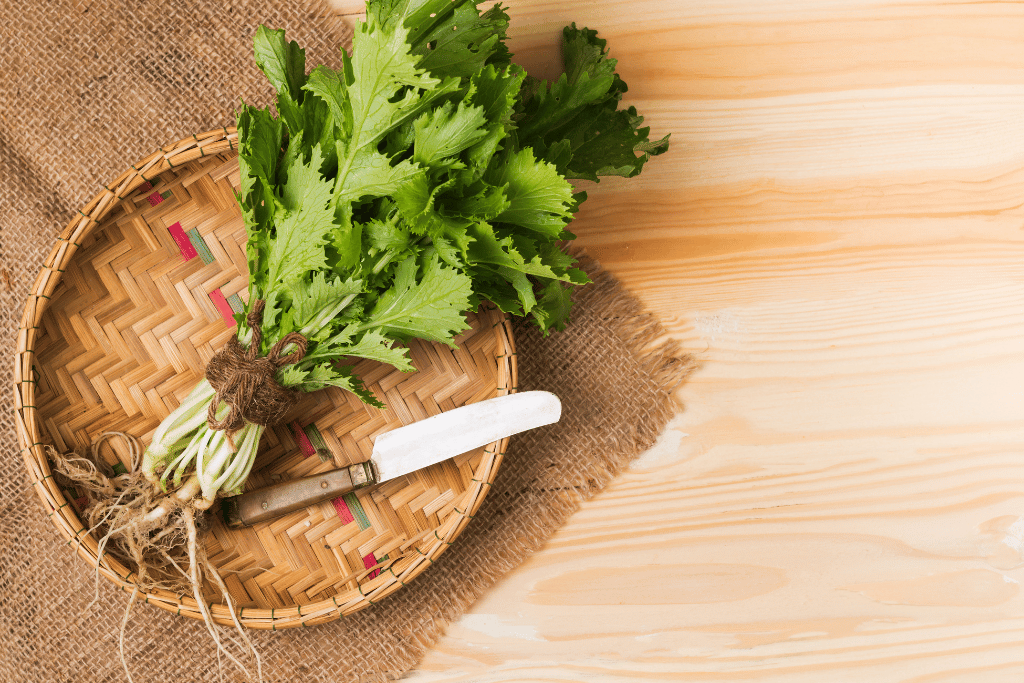
Mizuna, a delightful leafy green that belongs to the mustard family, makes an excellent addition to your November garden. To cultivate mizuna, consider these steps
First, find a sunny to partially shaded spot with well-drained soil. Then, sow mizuna seeds directly in the garden or in containers, spacing them about 6 inches apart. Keep the soil consistently moist and provide even watering to encourage tender leaves.
Mizuna is fast-growing, and you can start harvesting the outer leaves for salads and stir-fries as soon as they reach a suitable size.
Horseradish
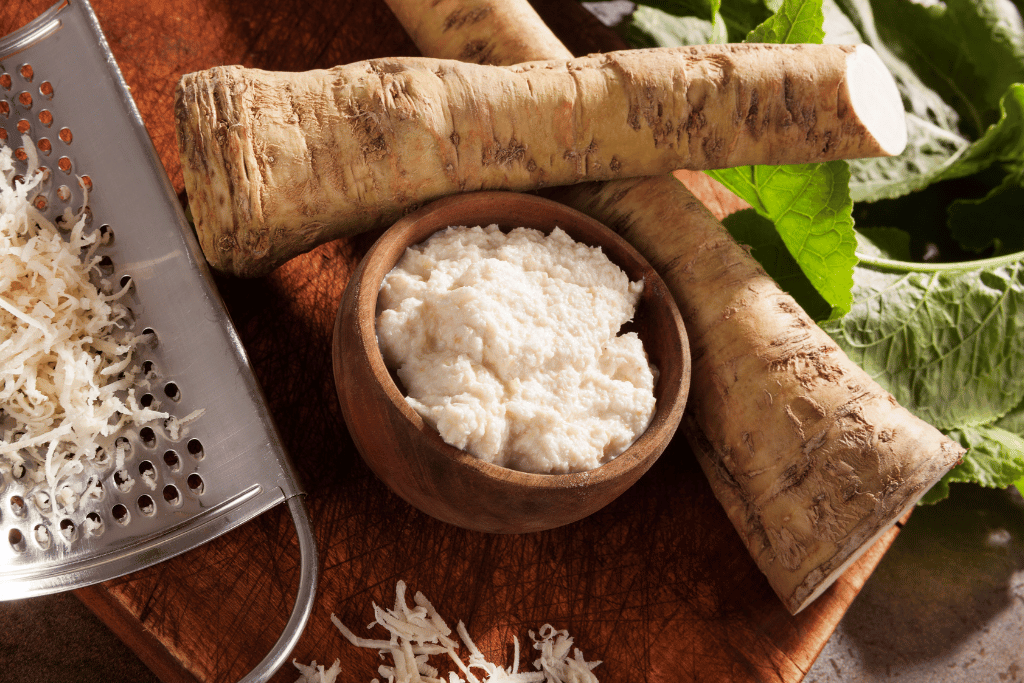
Horseradish is ideal for November planting, a pungent and perennial plant. To cultivate horseradish, consider the following:
Choose a location for horseradish that allows for its spreading nature, as it can be invasive. Plant horseradish roots, known as “crowns,” in well-drained soil with full sun to partial shade. Horseradish roots are typically placed at an angle in the soil, and the crown should be just below the surface. Keep the soil consistently moist during the growing season.
Harvest horseradish roots in the fall or spring for use in sauces, condiments, and other culinary applications.
Spring Cabbage
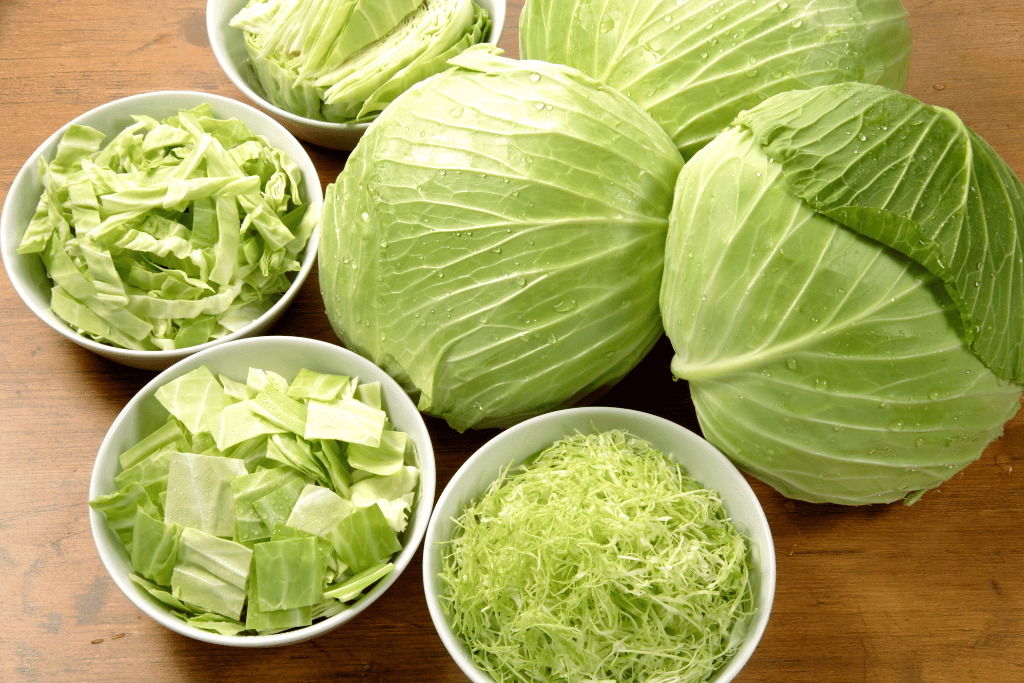
Spring Cabbage can be grown for a spring harvest, and November is a suitable time to get started. Here’s how to plant spring cabbage:
Choose a location with well-drained soil and full to partial sunlight. Sow spring cabbage seeds or transplant seedlings in rows with about 18 inches of space between them. Keep the soil consistently moist, especially during drier periods.
As the spring approaches, you can expect to harvest tender spring cabbages for a variety of culinary uses.
Broad Beans
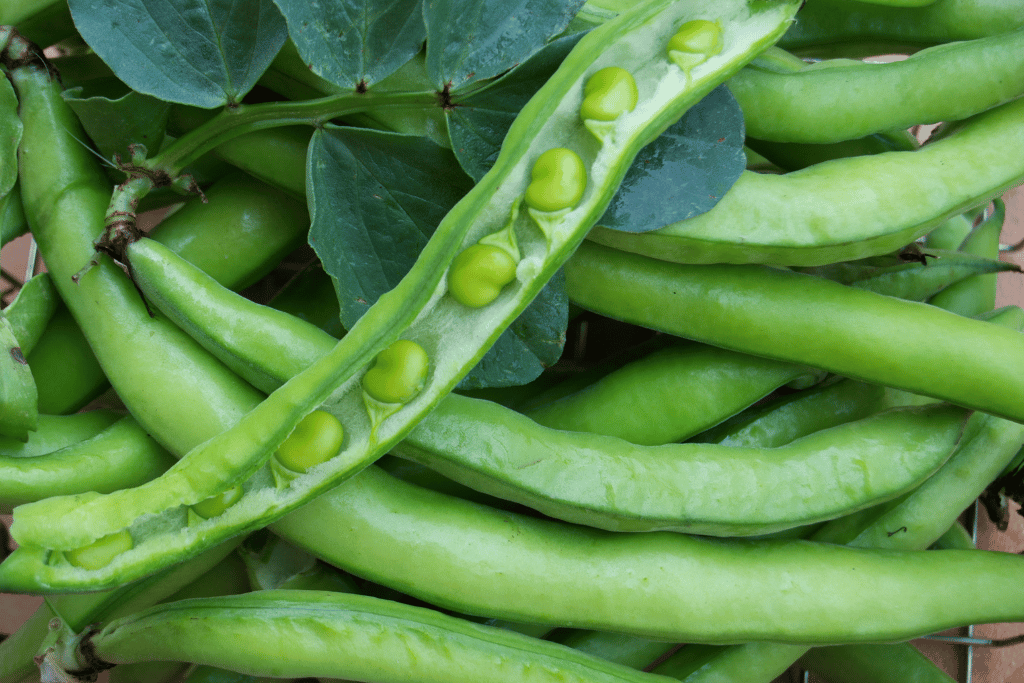
Broad Beans, also known as fava beans, are an excellent choice for your November garden. To cultivate broad beans, follow these steps:
Select a sunny spot with well-drained soil. Plant broad bean seeds directly in the garden, spacing them about 4-6 inches apart. Water the beans regularly, ensuring that the soil remains consistently moist.
Broad beans will grow and produce delicious beans within a few months, depending on your local climate and growing conditions.
Chilies
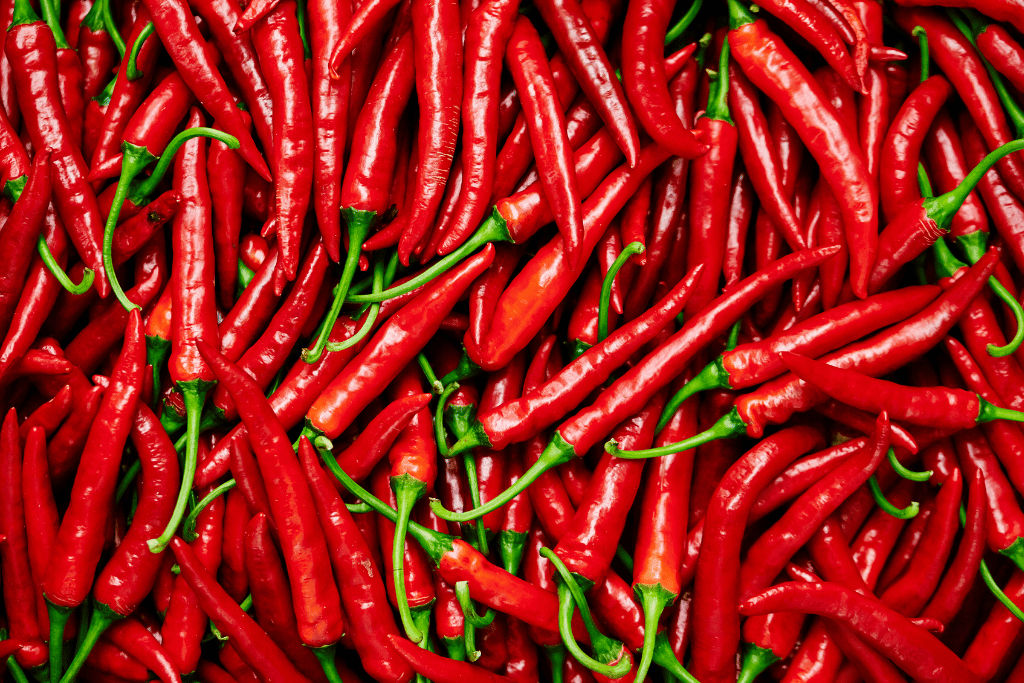
Growing early-maturing chili peppers in November requires some care and attention to protect them from cooler temperatures. Here’s how to go about it:
Start chili pepper seeds indoors in pots or containers, as they need warmth to germinate and grow initially. Transplant the young chili plants to your garden when all danger of frost has passed. Choose a sunny location with well-draining soil.
Protect the young chilies from cooler temperatures with row covers or cloches. Regularly water and care for your chili plants, and you can expect an early harvest of spicy peppers.
Pea Shoots
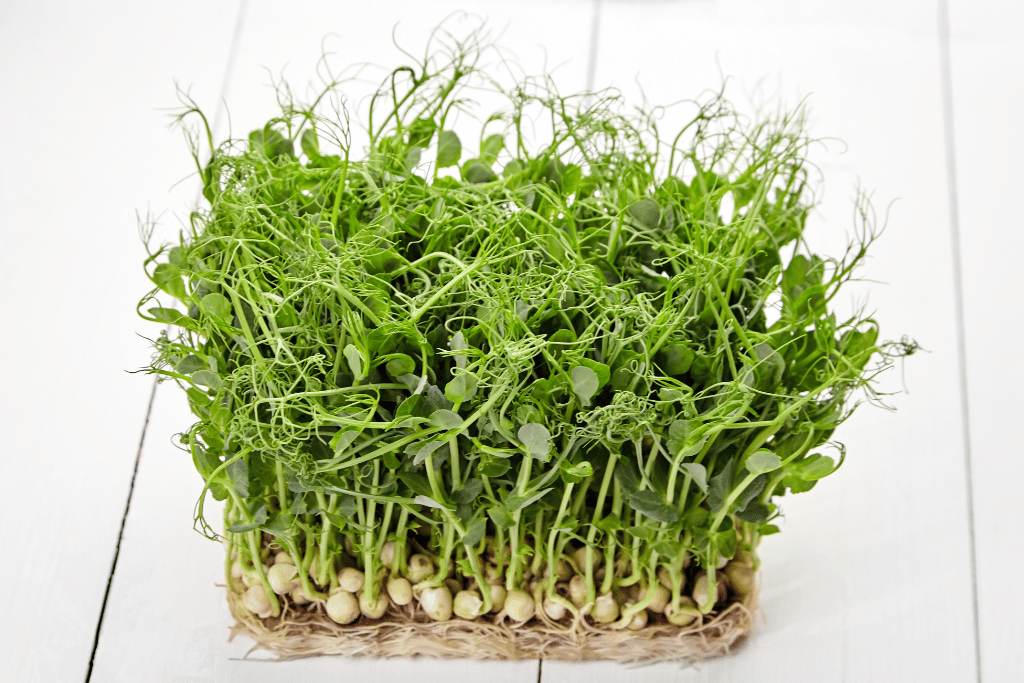
Pea Shoots are young, tender leaves and tendrils of pea plants, making them a delicious and nutritious addition to your garden. Follow how to grow pea shoots:
Start by choosing a location with partial sunlight. Pea shoots don’t require full sun and can even thrive in shadier areas. Sow pea shoot seeds directly in the garden or in containers, ensuring good soil drainage. Keep the soil consistently moist to encourage quick growth.
Pea shoots are fast growers and can be harvested as soon as they reach a desirable height, usually around 2-6 inches. Snip them for use in salads, sandwiches, and as a garnish.
Asparagus
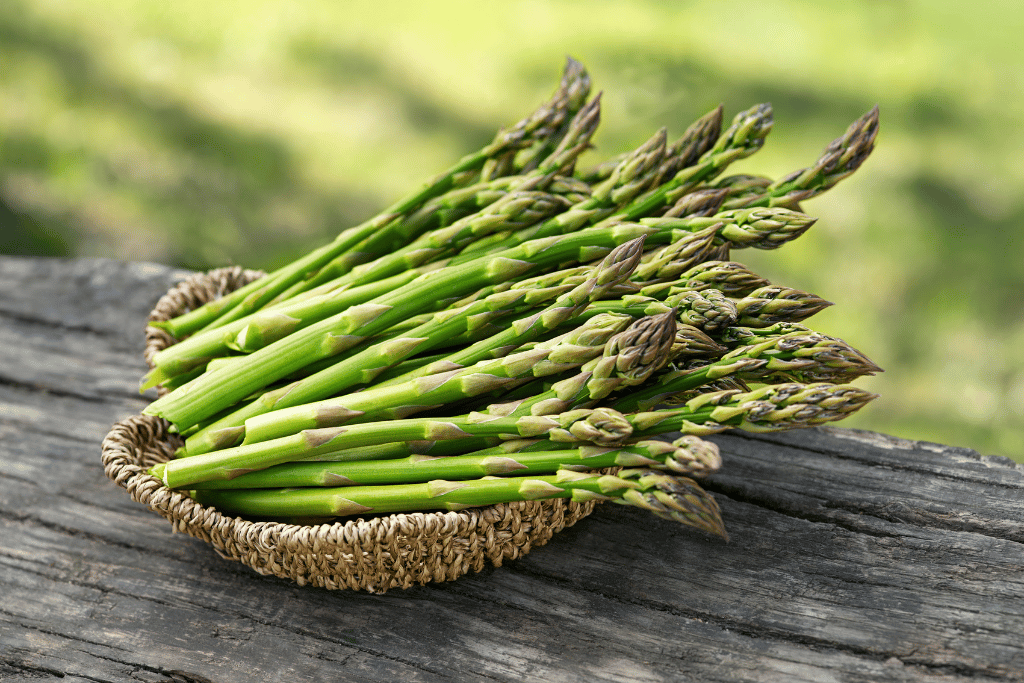
Asparagus is a perennial vegetable, and planting it in November is a great investment for future harvests. To grow asparagus:
Select a sunny location with well-drained, fertile soil. Asparagus can last for many years, so choose your spot wisely. Plant asparagus crowns in trenches about 8-12 inches deep and spaced about 12-18 inches apart. Cover the crowns with soil as they grow, and provide them with consistent moisture.
Asparagus takes a few years to establish before you can start harvesting the tender spears. Be patient, as the long-term rewards are worth it.
Cilantro
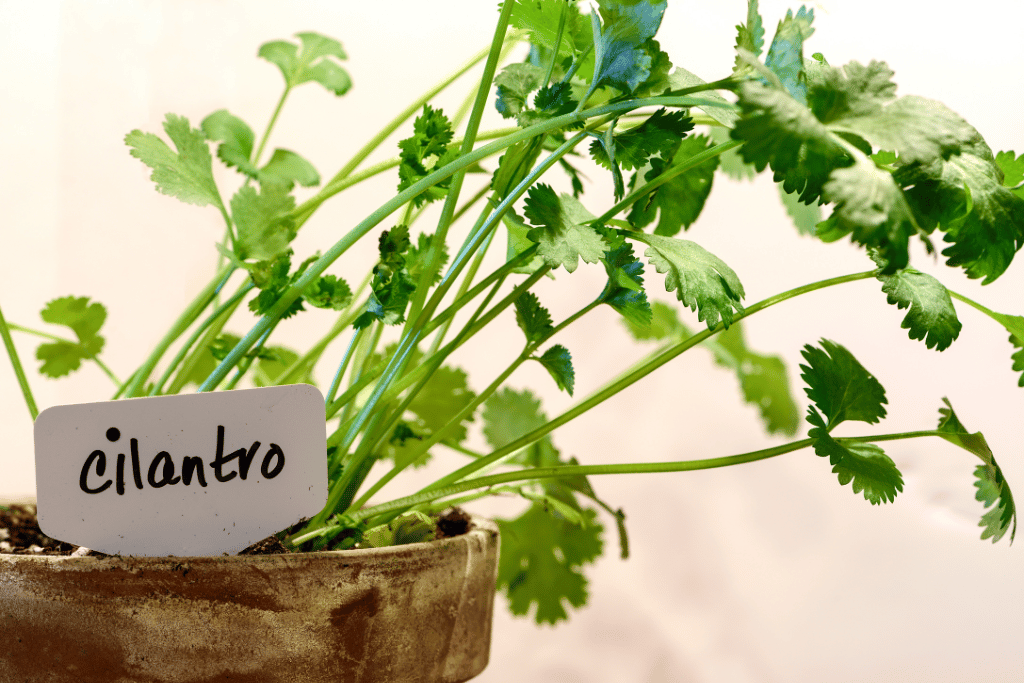
Cilantro, also known as coriander, is a versatile herb used in many cuisines. To grow cilantro, follow these steps:
Choose a sunny to partially shaded location with well-drained soil. Sow cilantro seeds directly in the garden or in containers, spacing them a few inches apart. Keep the soil consistently moist to encourage a steady supply of cilantro leaves.
Cilantro has a tendency to bolt (go to seed) in hot weather, so you can extend the growing season by providing some shade during the hottest parts of the day.
Broccoli
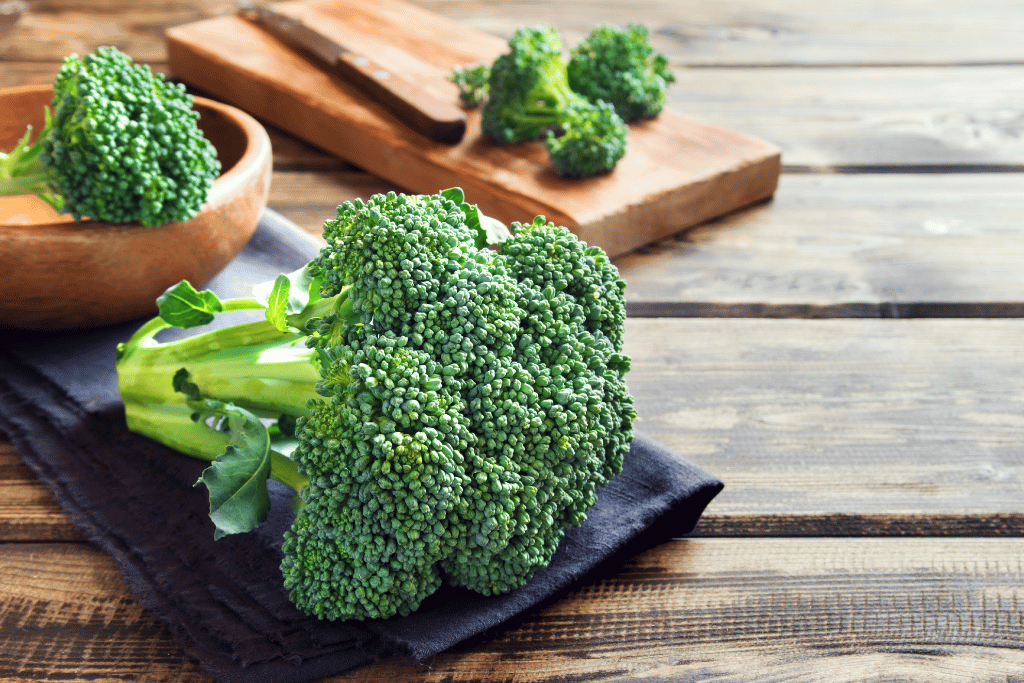
Broccoli is another cool-season vegetable that is well-suited for November planting. Here’s how to cultivate broccoli:
Choose a location with full sunlight and well-drained soil. Plant broccoli seeds or transplant seedlings, spacing them about 18-24 inches apart. Water the broccoli plants consistently to ensure proper growth.
As the broccoli heads form, you can harvest them when they are compact and firm for use in your favorite recipes.
What fruits grow in November
In November, the selection of fruits that can be planted may be limited due to the cooler temperatures in many regions. However, there are a few fruit trees and plants that you can consider planting or caring for in November, depending on your local climate and growing conditions. Here are some options:
Apples
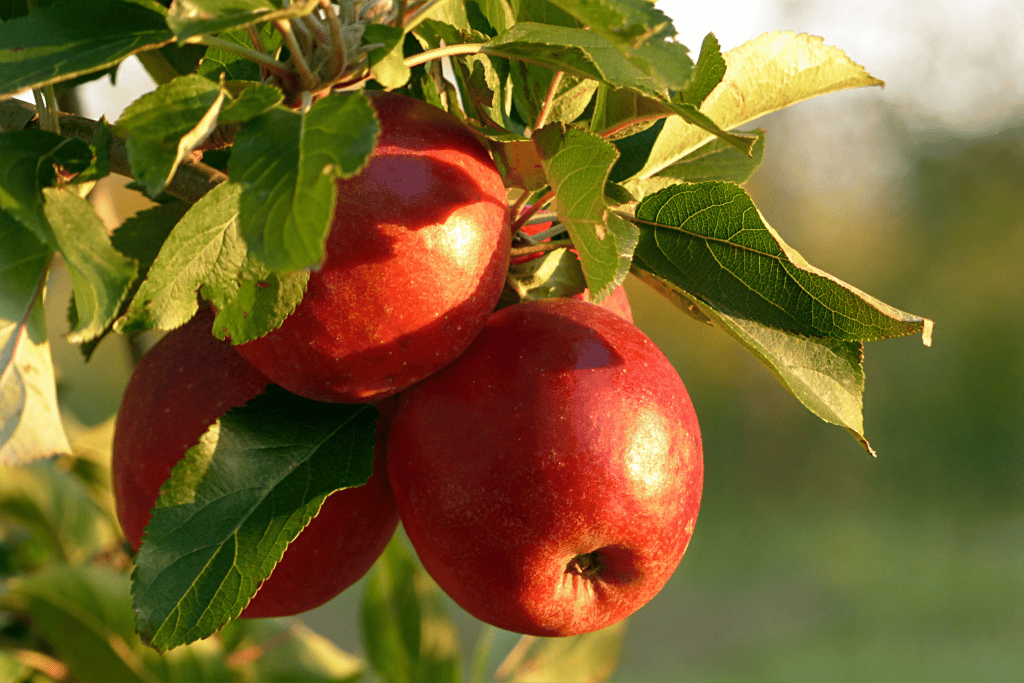
When planting apples, it’s crucial to choose suitable varieties for your local climate and soil conditions. Consider disease-resistant varieties to simplify maintenance. Select a sunny location with well-drained soil, and ensure you dig a hole large enough to accommodate the apple tree’s root system. Plant the tree at the same depth it was in the nursery container. Adequate spacing is essential to allow for proper air circulation and future growth, typically ranging from 10 to 20 feet, depending on the variety. Keep the soil consistently moist, especially during the tree’s early years, and be cautious not to overwater to prevent root rot.
Mulch around the base of the tree to retain moisture, regulate soil temperature, and suppress weeds. Regular pruning is necessary to promote healthy growth and shape, removing any dead or diseased branches. Fertilize with a balanced, slow-release fertilizer in the spring, following recommended guidelines for your specific apple variety. Keep an eye out for common apple pests and diseases, such as aphids, apple scab, and codling moths, and use appropriate organic or chemical controls as needed.
Figs
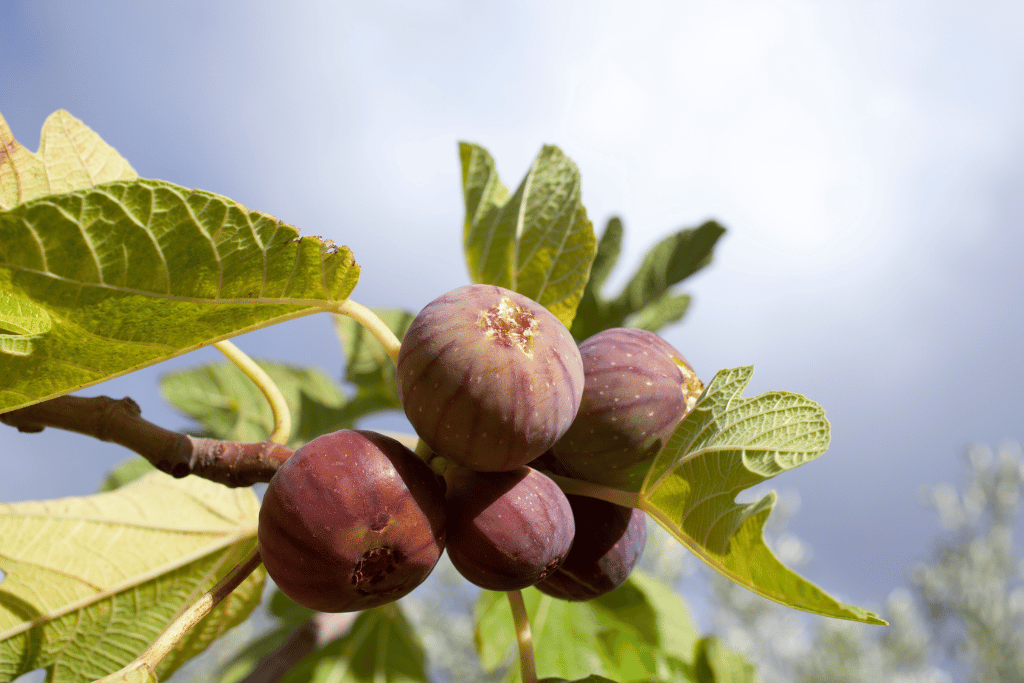
To cultivate figs successfully, select varieties well-suited to your region, such as Brown Turkey and Celeste.
Find a sunny spot with well-drained soil, as fig trees are often grown as small to medium-sized shrubs, and make sure to plant them at the same depth they were in the nursery container. Space fig trees about 10 to 15 feet apart to allow for natural growth and fruiting. Keep the soil consistently moist, especially during the growing season, though fig trees are drought-tolerant once established.
Apply mulch around the base of the tree to conserve moisture and prevent weeds. Prune fig trees to shape and maintain their size, removing dead or damaged branches and conducting light pruning in late winter or early spring. Fertilize with a balanced fertilizer in the spring to support growth and fruiting. Be vigilant for common fig pests such as scale insects and nematodes, and promptly remove fallen fruit to maintain good hygiene and prevent disease.
Grapes
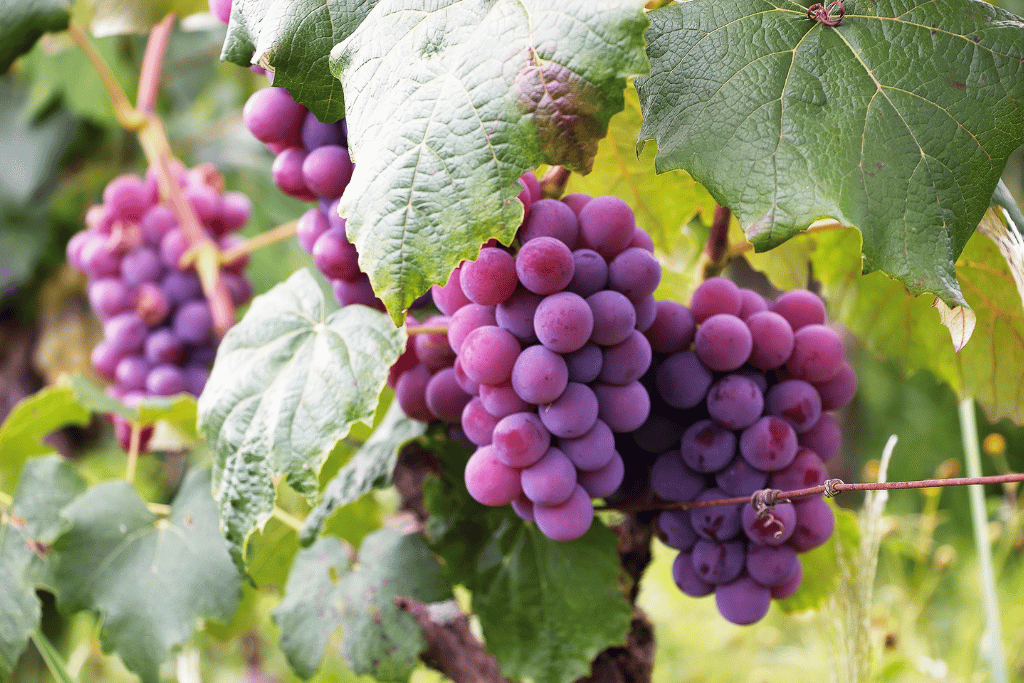
Grapes are a delightful addition to the garden, whether for table grapes or wine grapes. For successful cultivation, plant grapevines in a sunny location with well-drained soil, ensuring proper support, such as trellises or arbors, for the vines to climb. Space the grapevines about 6 to 8 feet apart along the support structure. Grapes require regular, deep watering, especially during dry spells.
Avoid overhead watering to prevent fungal issues. Pruning is crucial for grapevines to control growth, improve air circulation, and enhance fruit production. Prune in late winter or early spring. Provide a balanced fertilizer in the spring as vines start to grow. Keep a close watch for common grape pests like grape leafhoppers and fungal diseases such as powdery mildew. Use appropriate controls as needed.
Pawpaws
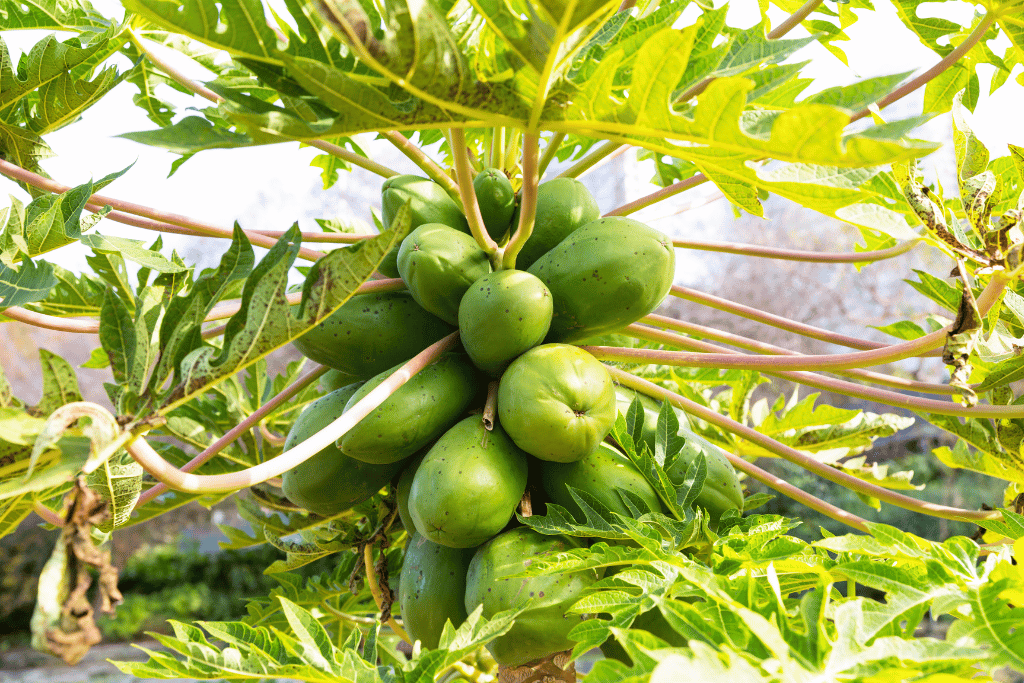
Pawpaws are a unique and native fruit tree choice for your garden. Select local varieties or those suited to your region. Find a well-drained, partially shaded spot for pawpaw trees, as they thrive under the canopy of larger trees. Space the trees about 10 to 15 feet apart to accommodate their mature size.
Keep the soil consistently moist, especially during dry periods, and apply mulch to retain soil moisture and suppress weeds around the base of the trees. Pawpaw trees generally require minimal pruning; only remove dead or damaged branches as needed. Fertilize annually with a balanced fertilizer. Keep an eye out for common pests like pawpaw fruit flies and diseases like powdery mildew, and apply appropriate controls if necessary.
Pears
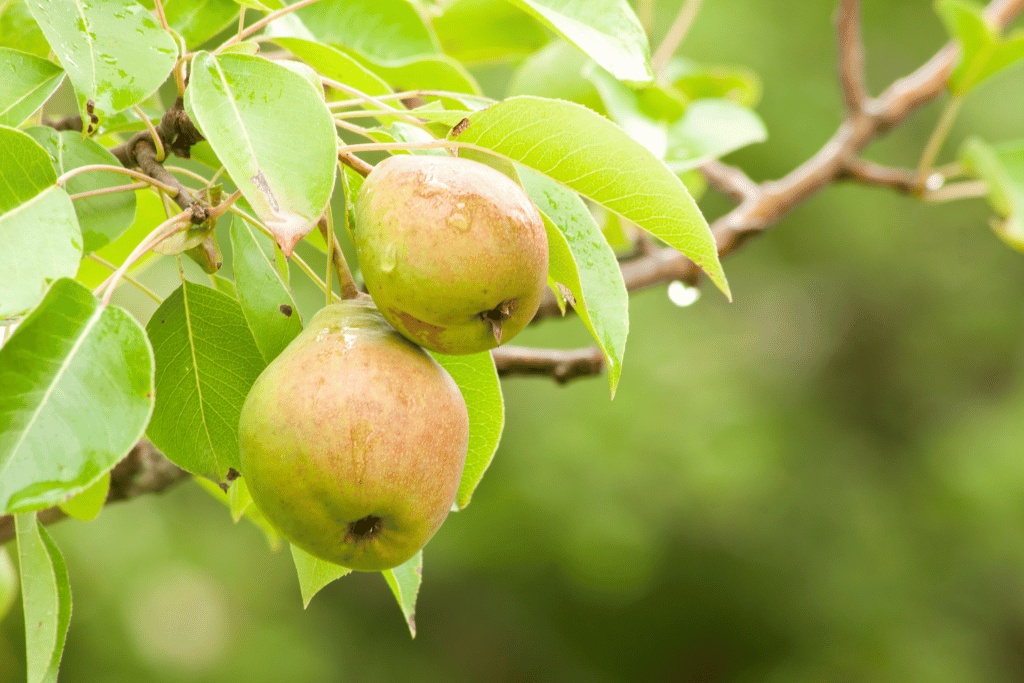
Growing pear trees in your garden can be rewarding. To ensure success, select pear tree varieties that suit your climate and growing conditions, such as European or Asian pears. Find a sunny location with well-drained soil and plant pear trees at the same depth as they were in the nursery container. Space them about 15 to 20 feet apart to allow for their mature size. Keep the soil consistently moist, especially during dry spells. Apply mulch to retain moisture and control weeds around the base of the tree.
Prune pear trees regularly to shape and encourage healthy growth, removing dead or diseased branches and conducting annual pruning in late winter or early spring. Fertilize with a balanced fertilizer in the spring to support growth and fruiting. Be on the lookout for common pear pests such as pear psylla and diseases like fire blight. Apply appropriate controls as needed.
By following these guidelines, you can enjoy a fruitful harvest from your pear trees in the years to come.
Persimmons
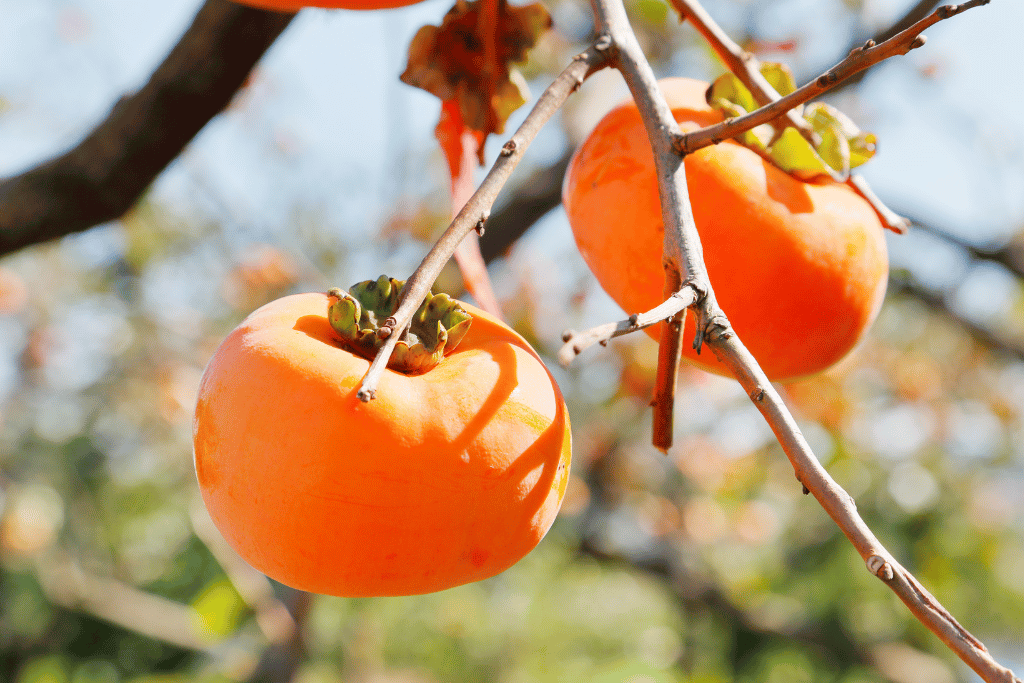
Persimmons are a delightful addition to the garden, known for their sweet and flavorful fruit. When planting persimmons, choose a location with well-drained soil and full sunlight. These trees can be sensitive to cold temperatures, so select a spot with some protection from frost. Plant the persimmon tree at the same depth as it was in the nursery container. Adequate spacing is essential to allow for proper growth and airflow, usually 15 to 20 feet apart. Keep the soil consistently moist, especially during dry spells. Apply mulch around the base of the tree to retain moisture and suppress weeds. Pruning is typically minimal, focusing on shaping the tree and removing dead or damaged branches. Fertilize with a balanced fertilizer in the spring to support growth and fruiting.
Be vigilant for common persimmon pests such as aphids and scale insects. Protect young trees from frost or cold snaps in the early years to ensure their health and fruit production.
Quince
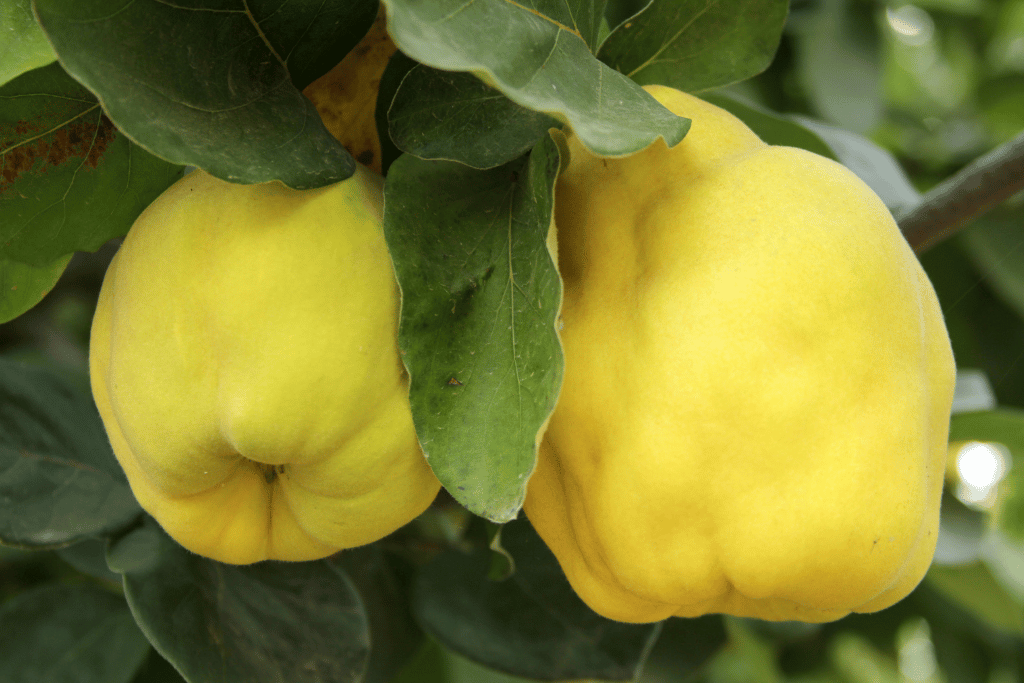
Quince trees offer unique and aromatic fruit for your garden. Plant quince trees in a sunny location with well-drained soil. These trees are relatively small, so they work well in gardens with limited space.
When planting, make sure to dig a hole large enough to accommodate the tree’s root system. Keep the soil consistently moist, especially during dry periods. Apply mulch around the base of the tree to conserve moisture and suppress weeds. Pruning is minimal, focusing on shaping the tree and removing any dead or damaged branches. Fertilize with a balanced fertilizer in the spring as the tree starts to grow. Watch out for common quince pests such as aphids and scale insects and take appropriate measures to control them.
Cherries
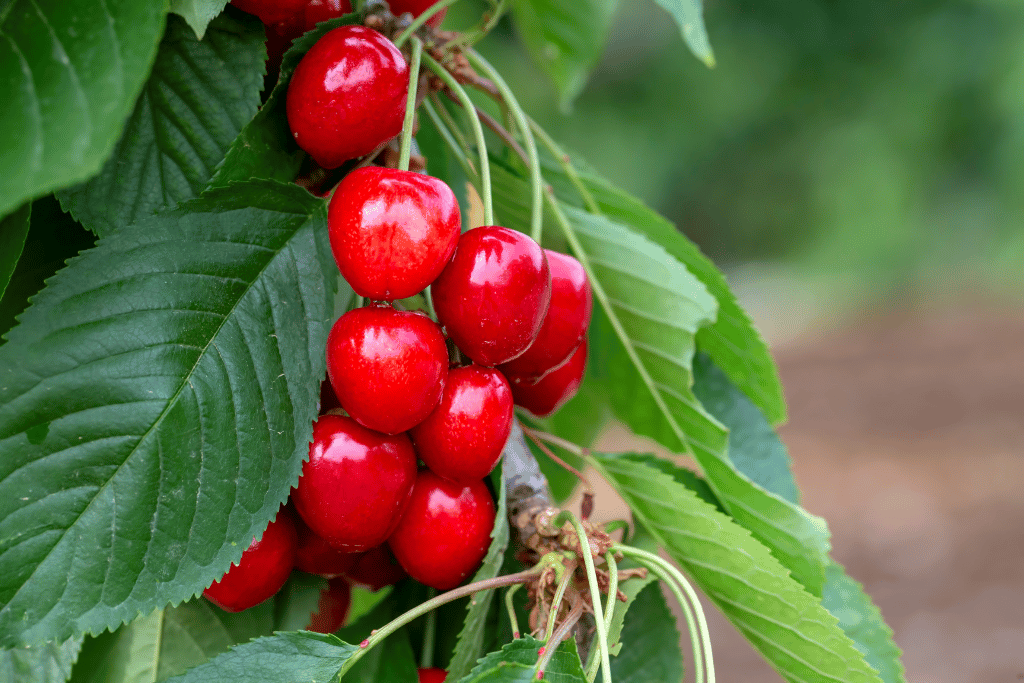
Growing cherries in your garden can be rewarding. When planting cherry trees, choose varieties suitable for your climate and location, considering factors like sweet or sour cherries and self-fertile or pollinator-dependent varieties. Find a sunny location with well-drained soil and plant cherry trees at the same depth they were in the nursery container. Provide adequate spacing, usually around 20 feet apart.
Cherries require regular, deep watering, especially during dry periods, and mulching around the base of the tree can help conserve moisture and control weeds. Pruning is crucial for cherries to shape the tree and maintain its size. Remove dead or damaged branches and conduct light pruning in late winter or early spring. Fertilize with a balanced fertilizer in the spring to support growth and fruiting.
Keep an eye out for common cherry pests like cherry fruit flies and diseases like brown rot. Apply appropriate controls as needed.
Raspberries
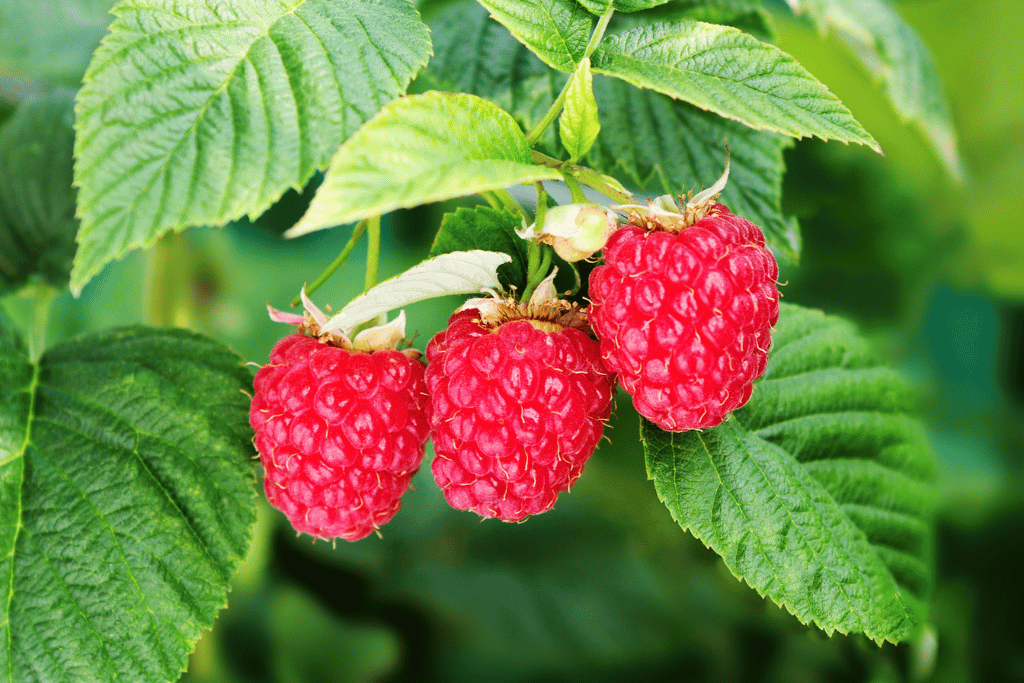
Raspberries are a delightful addition to any garden, offering sweet and tart berries for fresh eating or processing. Choose a sunny location with well-drained soil for raspberry plants. Space the plants about 2 to 3 feet apart in rows, ensuring good air circulation. Raspberries require regular watering, especially during dry spells, to maintain soil moisture. Apply mulch around the base of the plants to conserve moisture and suppress weeds.
Prune raspberry canes annually, typically in late winter or early spring, to encourage healthy growth and fruiting. Fertilize with a balanced fertilizer in the spring as new growth begins. Keep an eye out for common raspberry pests like aphids and diseases like powdery mildew. Use appropriate controls if needed.
Strawberries
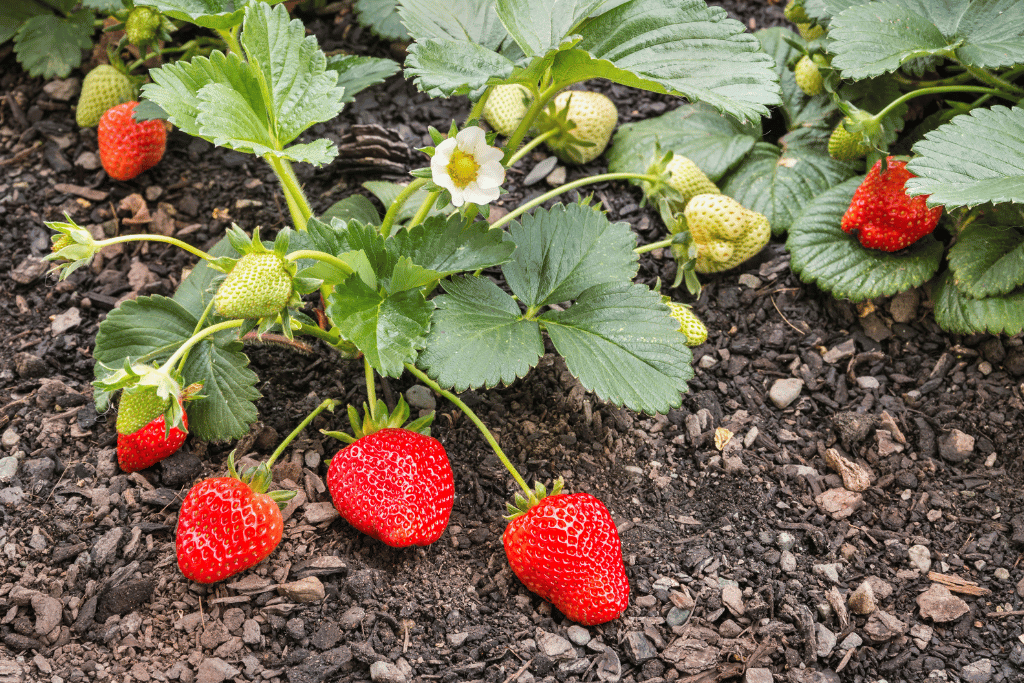
Strawberries are a popular and delicious fruit choice for gardens. When planting strawberries, select a sunny location with well-drained soil. Ensure that the soil is rich in organic matter. Space the strawberry plants about 12 to 18 inches apart in rows, allowing for good air circulation. Water strawberries consistently, ensuring that the soil remains evenly moist but not waterlogged. Mulch around the plants to conserve moisture and suppress weeds. Prune strawberry runners to encourage the formation of strong, healthy plants. Fertilize with a balanced fertilizer in the spring as the new growth emerges. Keep an eye out for common strawberry pests like slugs and snails, and take appropriate measures to control them.
What flowers to plant in November
Planting flowers in November can bring beauty to your garden and brighten up your landscape even as the weather gets colder. While the selection of flowers for November planting depends on your local climate and growing zone, there are several options that you can consider:
Pansies
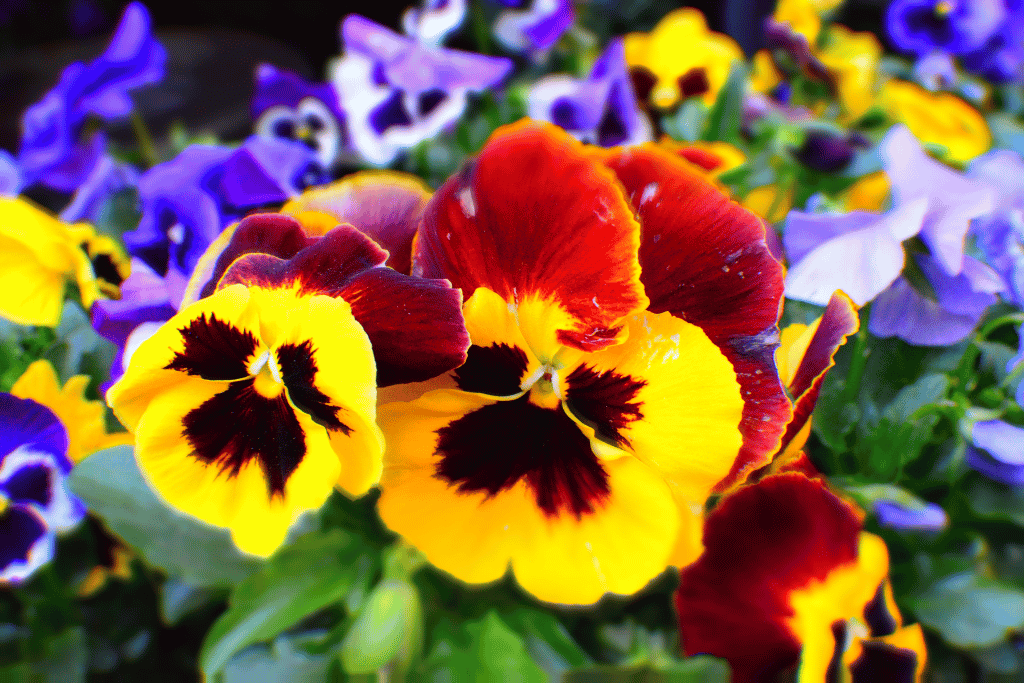
Pansies are beloved cool-season flowers with the remarkable ability to thrive in the fall and continue to bloom even in milder winter climates. They are available in a wide array of colors, including shades of purple, yellow, orange, and blue. Pansies are exceptional for adding a burst of vibrant color to your garden when other plants are winding down for the year.
These hardy flowers are versatile and can be used in flower beds, containers, and window boxes, making them a fantastic choice for your late-season gardening projects.
Violas
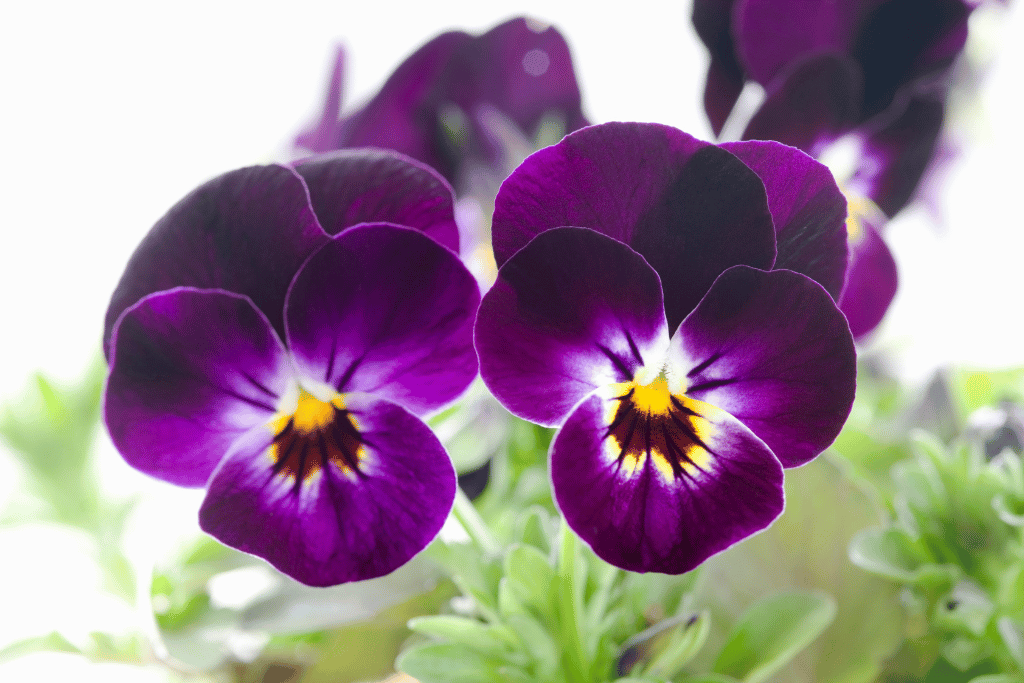
Violas are closely related to pansies and share their cool-season hardiness. They come in a variety of colors and exhibit a charming, dainty appearance. Violas are perfect for borders, where their low-growing, spreading nature adds visual interest to your garden’s edges. They are also ideal for containers and edging, creating beautiful accents in your outdoor spaces during the cooler months.
Chrysanthemums (Mums)
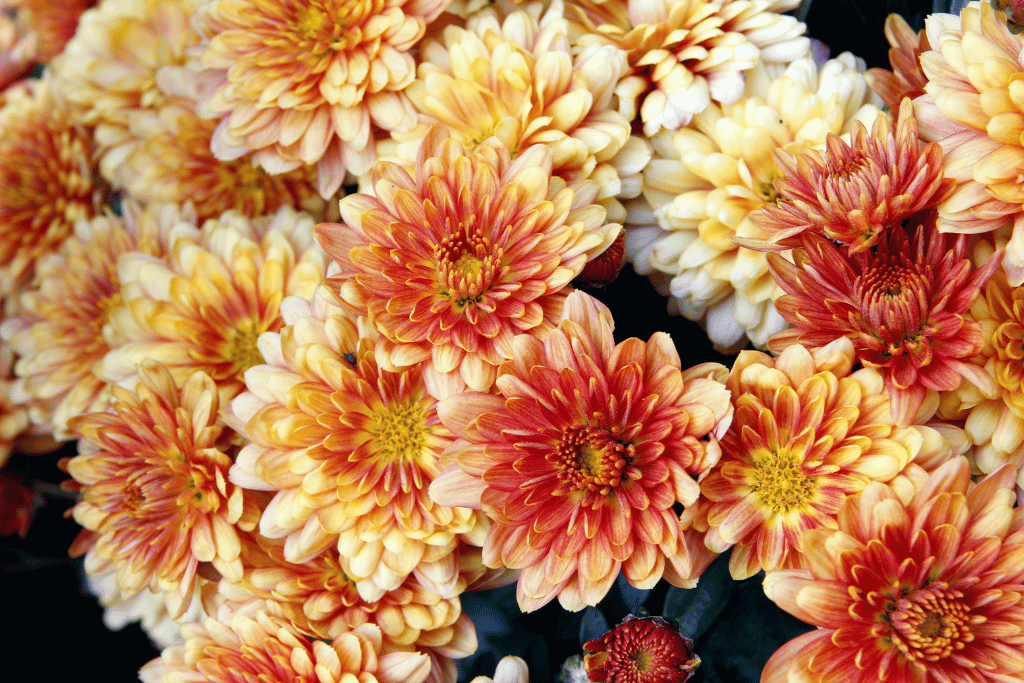
Chrysanthemums, often affectionately called mums, have earned their reputation as iconic autumn blossoms. These versatile flowers come in a delightful spectrum of colors, spanning from rich reds and yellows to gentle pastel hues. Mums not only infuse your garden with a festive spirit but also possess the robustness to endure colder weather. With their alluring blossoms and luxuriant, bushy growth, they remain a top pick for enhancing late-season garden exhibitions.
Snapdragons
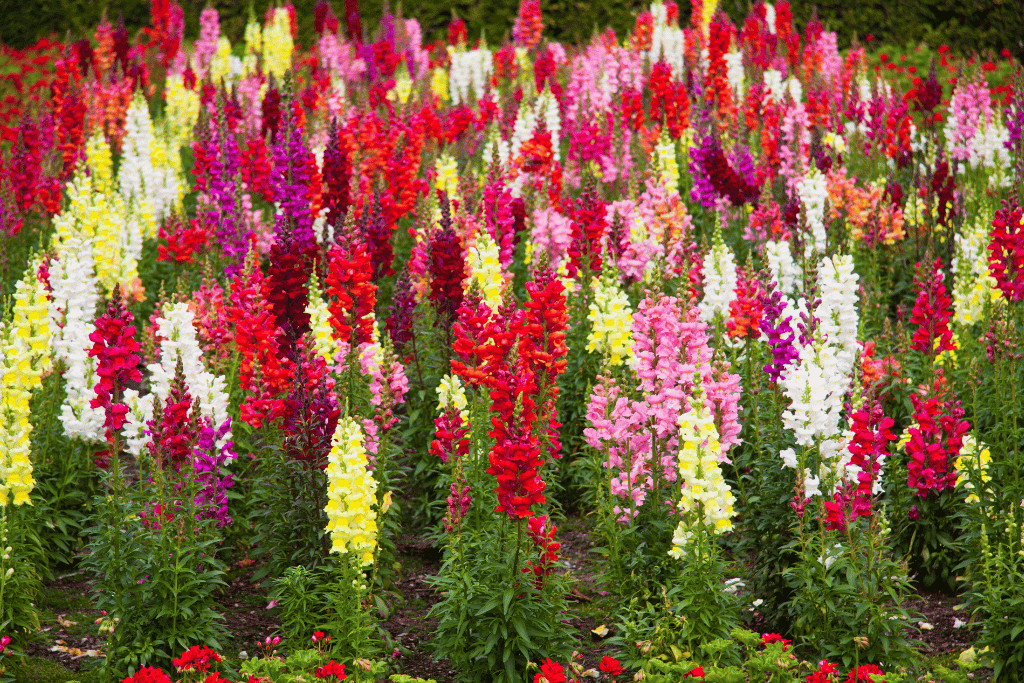
Snapdragons are celebrated for their unique, tubular flowers and their ability to thrive in cooler weather. They come in a spectrum of vibrant colors, including red, orange, yellow, and pink. Snapdragons make exceptional additions to garden beds and containers. Their vertical growth and colorful blossoms create striking visual interest, even in the autumn and early winter.
Calendula
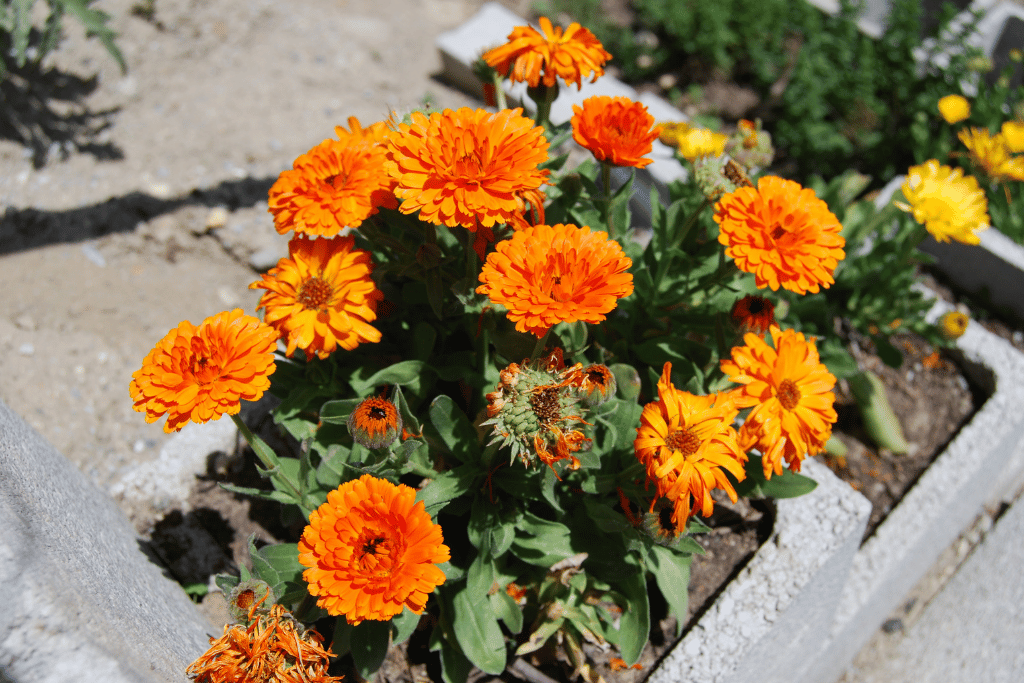
Calendula, often referred to as pot marigold, is a delightful and low-maintenance flower that’s an excellent choice for planting in November. It graces your garden with vibrant, sunlit blossoms in beautiful shades of yellow and orange. But calendula is more than just a pretty face. Its versatility knows no bounds. You can add its blossoms to salads for a touch of color and flavor, harness its healing properties in herbal remedies, or extract its natural pigments to use as dyes for a wide range of creative projects.
It’s ability to thrive in cooler temperatures makes it a fantastic addition to your late-season garden, ensuring it serves multiple purposes both in your outdoor space and beyond, extending its utility from the garden to the kitchen and craft room alike.
Alyssum
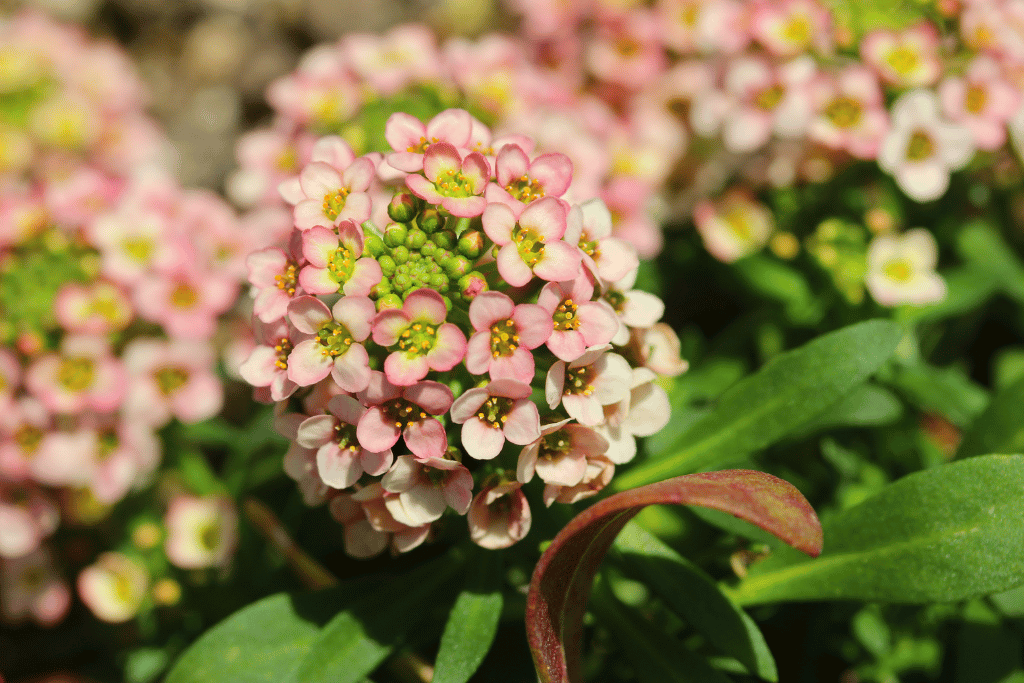
Sweet alyssum is a delightful, low-growing flower known for its fragrant blooms. These charming flowers work exceptionally well in borders, rock gardens, and hanging baskets. They add a touch of elegance to your garden, and the good news is that they can tolerate cooler temperatures. Their clusters of tiny, sweet-scented blossoms create a captivating visual and olfactory experience, making them a fantastic choice for late-season gardening projects.
Ornamental Kale and Cabbage
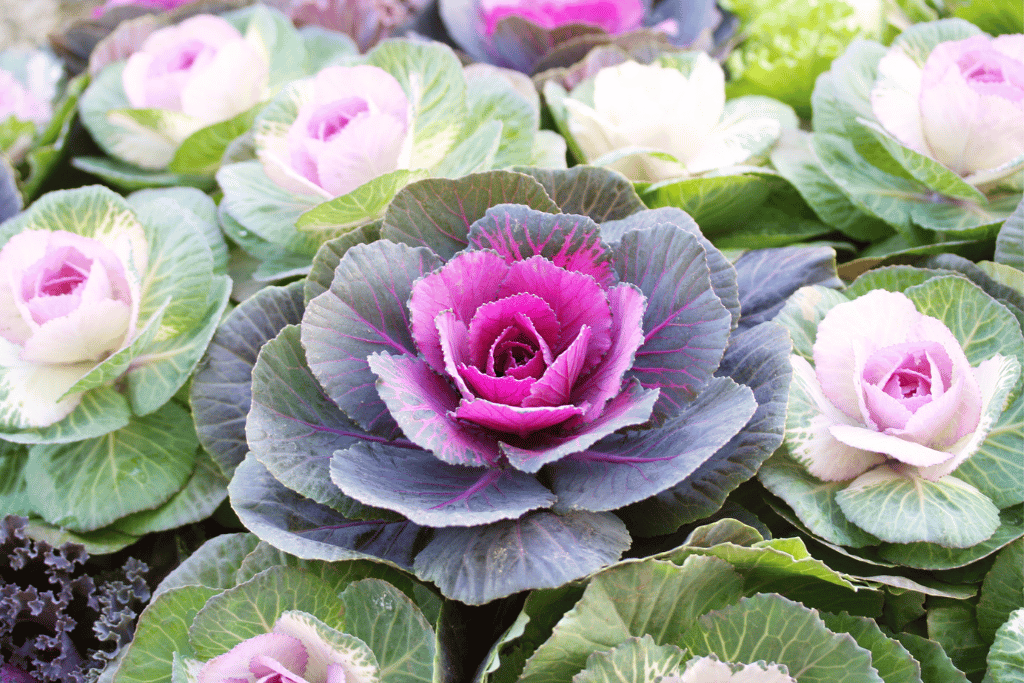
Although technically not flowers, ornamental kale and cabbage are well-loved for their vibrant, colorful foliage. These plants offer a striking visual contrast and interest to your garden during the fall and winter months. Their leaves come in shades of green, purple, and white, forming rosettes that resemble oversized roses. Planted in garden beds or containers, ornamental kale and cabbage provide a unique, non-floral dimension to your garden, adding texture and a pleasing aesthetic.
Primroses
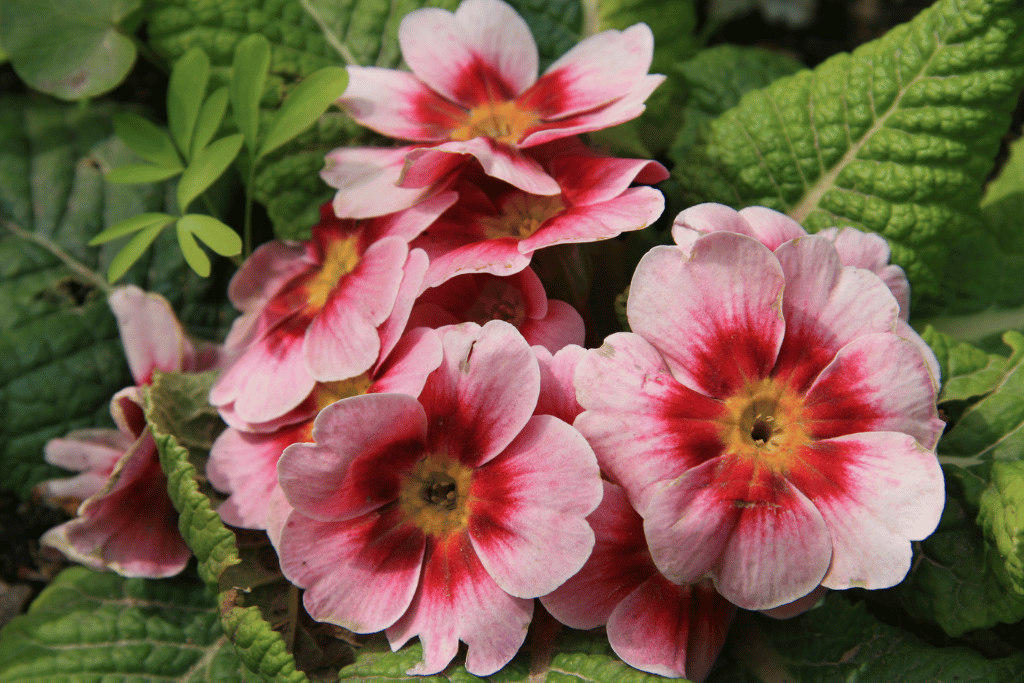
Primroses are cold-hardy and stand out as early-spring bloomers that can be planted in November. They offer a wide variety of colors, including soft pastels and bright hues, making them an ideal choice for infusing your garden with vibrancy. With their multiple petals and attractive foliage, primroses brighten up your outdoor space, enhancing its appeal and charm even during the cooler months.
Hellebores
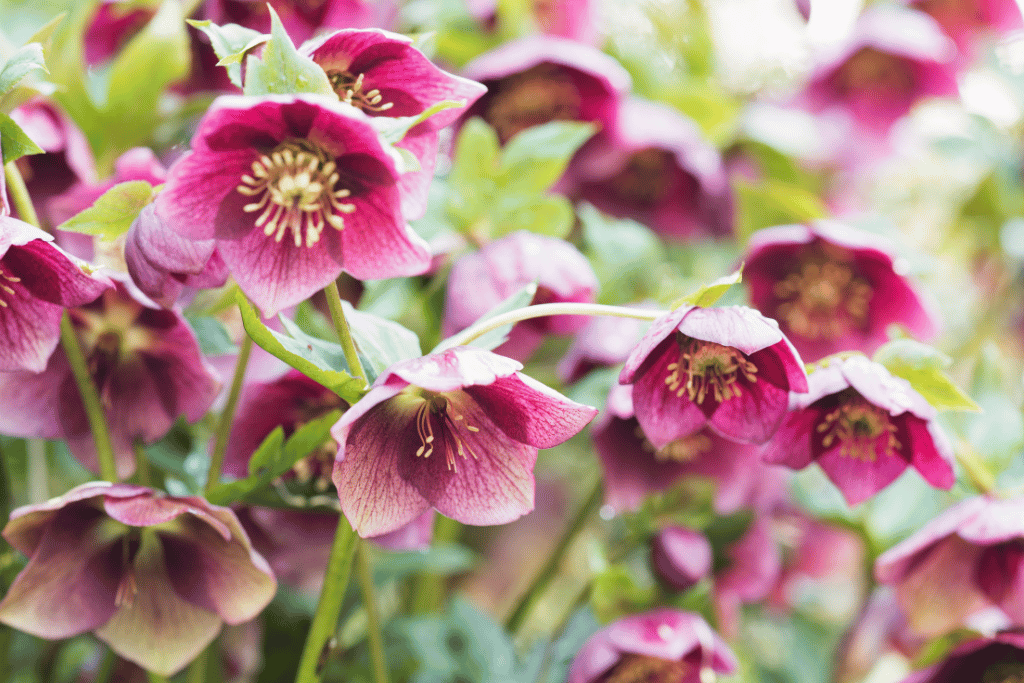
In November, when you plant them, hellebores, commonly referred to as Lenten roses, are enchanting evergreen perennials that grace us with their blooms in the late winter and early spring. Hellebores showcase an array of colors and boast charming, pendulous, cup-shaped blossoms, adding an elegant touch to your garden. These resilient, shade-loving plants can thrive in various garden environments, creating a delightful contrast to the wintry scenery. You can look forward to the delight of witnessing their distinctive and enduring flowers.
Cyclamen
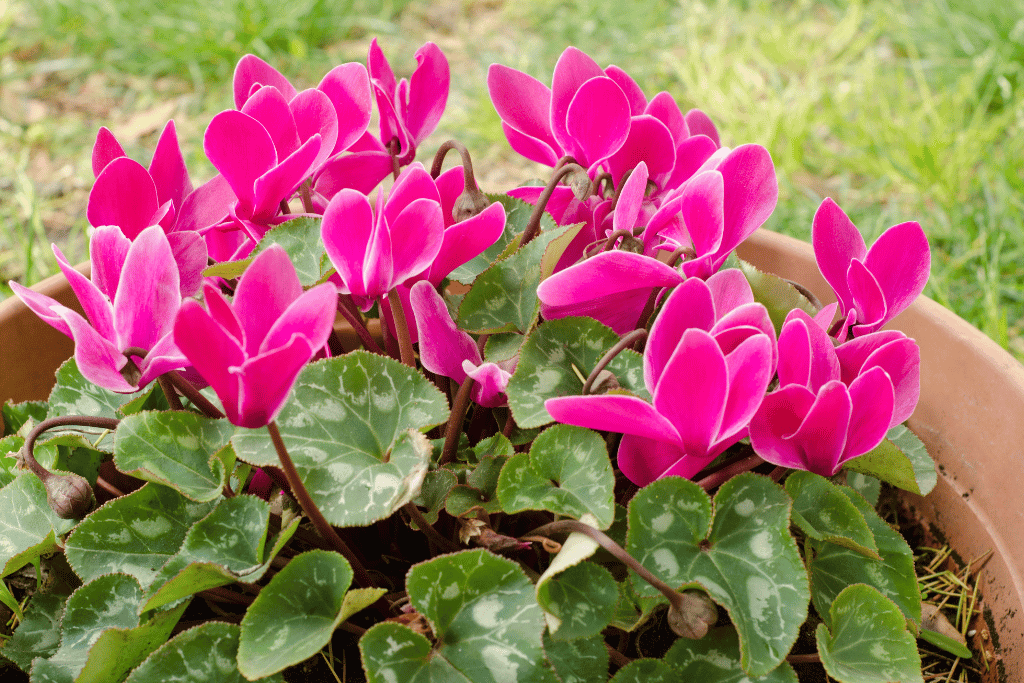
Cyclamen plants bring an air of delicacy and color to your garden during the winter and early spring months. With their dainty, colorful flowers and attractive foliage, they create a visual spectacle that’s sure to capture attention. Cyclamen are particularly well-suited for containers and hanging baskets, allowing you to enjoy their beauty up close. By planting cyclamen in November, you’ll be rewarded with a burst of color and charm, even in the cooler season.
Can you plant grass seed in November?
Planting grass seed in November is possible, but it comes with some considerations. Whether or not it’s a suitable time for grass seed planting depends on your specific location, climate, and the type of grass you intend to grow. Here are some points to keep in mind:
Climate and Region: The viability of planting grass seed in November varies depending on your region’s climate. In some areas with milder winters, it may be a feasible time for grass seed sowing. However, in regions with harsher, freezing temperatures, planting grass seed in November may not be advisable.
Grass Type: Cool-season grasses, such as Kentucky bluegrass, fescue, and bentgrass, are more likely to be planted in the fall. These grasses tend to germinate and establish best when the soil is cool but not frozen. Warm-season grasses, like Bermuda or Zoysia grass, should typically be planted in the spring or early summer.
Soil Temperature: Soil temperature is a crucial factor for successful grass seed germination. While the air temperature may be cool in November, the soil may still be warm enough to support seed germination for cool-season grasses. You can use a soil thermometer to gauge whether the soil is at an appropriate temperature (typically between 50-65°F or 10-18°C).
Maintenance: Planting grass seed in November may require extra care, especially if you’re in an area where winter arrives early. Adequate watering and protection from frost and harsh weather conditions are essential for the seedlings’ survival.
Early Spring Planting: If your region experiences very cold winters, it might be more advisable to wait until early spring to plant grass seed. This allows the seed to germinate and establish in more favorable conditions.
Consult Local Experts: Local agricultural extension offices, nurseries, and gardening centers often provide guidance specific to your region’s climate and conditions. It’s a good idea to consult with local experts for the most accurate recommendations.
Grasses to grow in November
Kentucky Bluegrass (Poa pratensis)
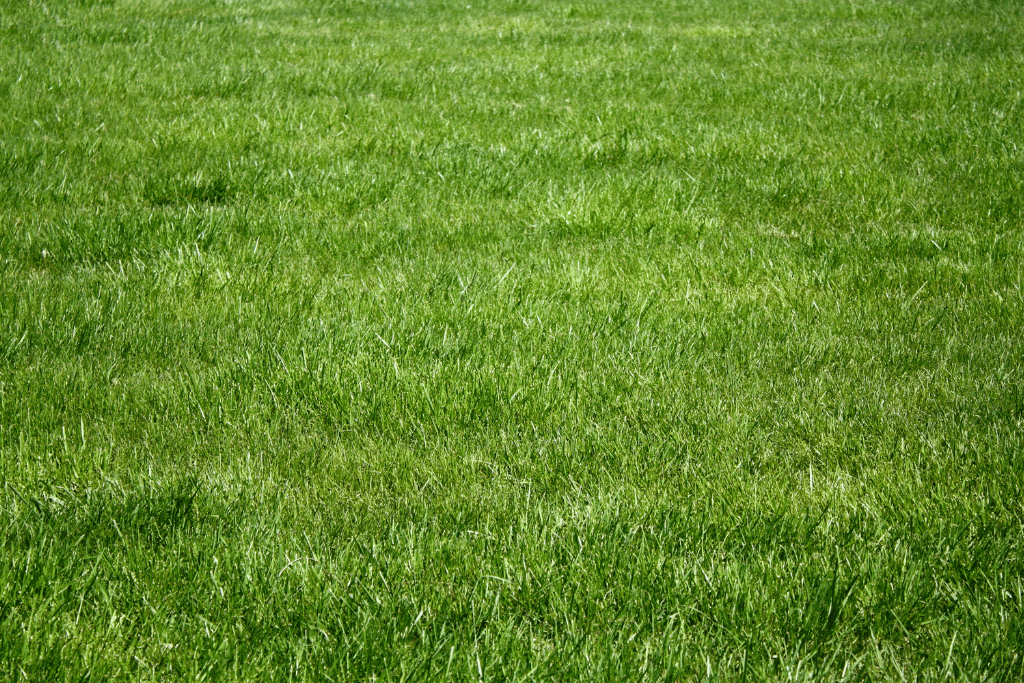
Kentucky bluegrass is a cool-season grass that’s a popular choice for overseeding or establishing new lawns in November. It’s known for creating a lush, fine-textured lawn and thrives in colder climates. The vibrant green carpet it forms adds an attractive touch to any landscape, making it a sought-after option for those looking to revamp their lawns in the late fall.
Fine Fescue (Festuca spp.)
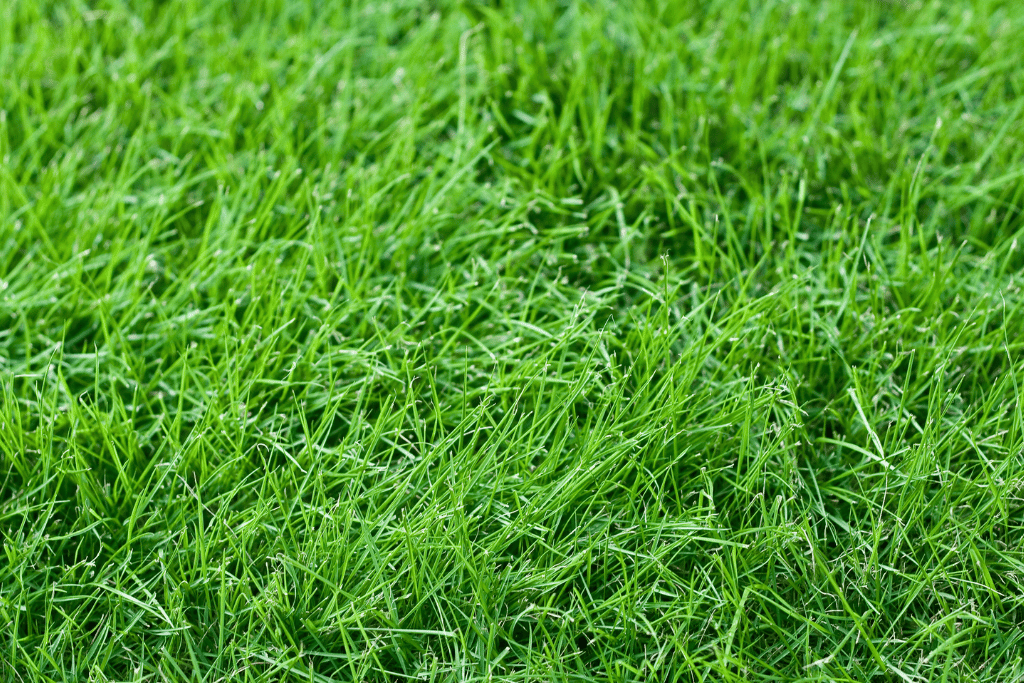
In November, fine fescue grasses, like creeping red fescue and chewings fescue, are excellent options for planting. These cold-tolerant grasses are particularly well-suited for shaded or partially shaded areas. Homeowners looking to maintain green lawns even in areas with limited sunlight often choose them due to their ability to thrive in less-than-ideal lighting conditions.
Perennial Ryegrass (Lolium perenne)
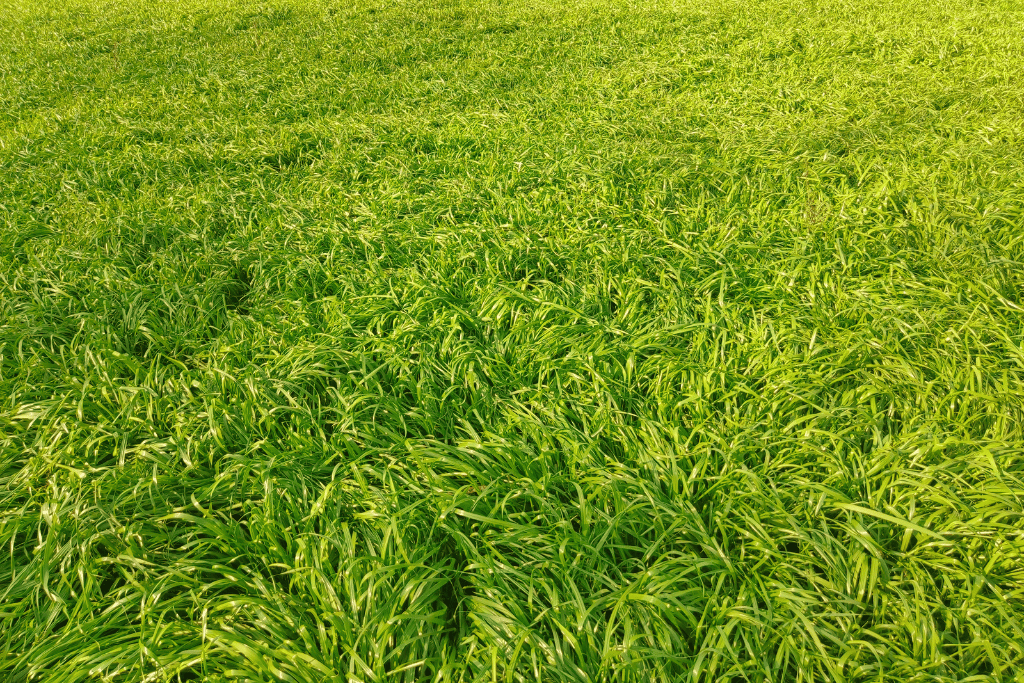
Perennial ryegrass is a standout choice for those seeking quick results. It’s appreciated for its rapid germination and rich, vibrant green color. This grass is a favorite for overseeding existing lawns in November or for establishing new lawns with fast, eye-catching results. Its ability to transform a dull lawn into a lush green oasis in a short span of time is one of its most appealing characteristics.
Tall Fescue (Festuca arundinacea)
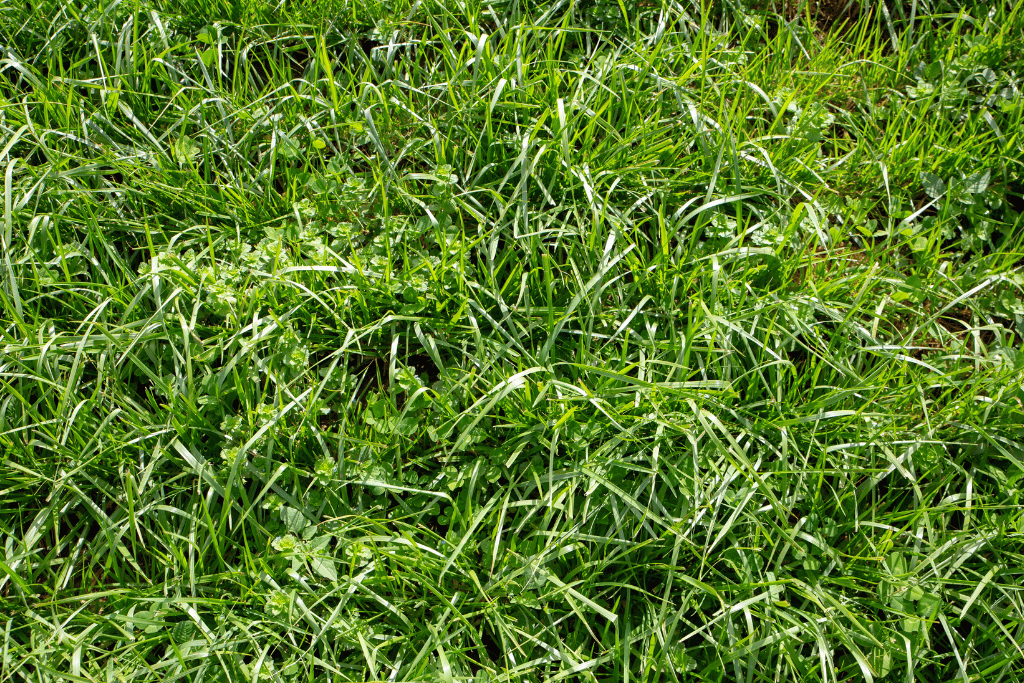
Tall fescue is a hardy cool-season grass that’s well-suited for planting in November. It’s renowned for its drought resistance and adaptability to various soil types. This makes it a reliable choice for homeowners in search of a low-maintenance, resilient lawn option. Even in the face of changing weather conditions, tall fescue stands tall and keeps your lawn looking its best.
Bentgrass (Agrostis spp.)
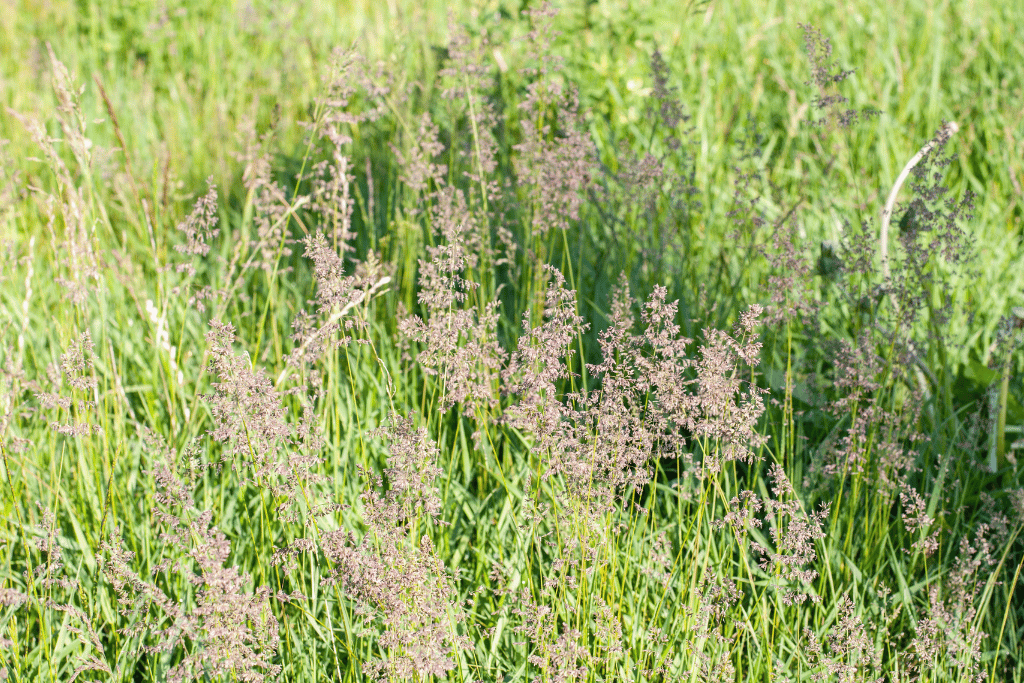
Bentgrass, while often associated with golf course putting greens, can find its place in your lawn when planted in November, provided your region has the right climate. Its fine, elegant texture adds a touch of sophistication to lawns and landscaping. If you’re looking to create a manicured, pristine appearance in your outdoor space, bentgrass can be the perfect choice. Its adaptability to certain climates and its eye-catching visual appeal make it a top pick for homeowners with a taste for luxury in their landscapes.


